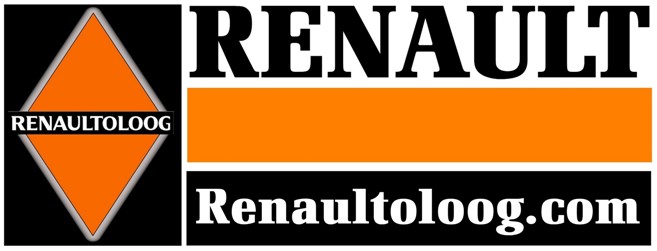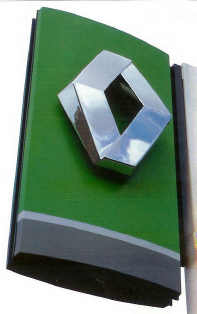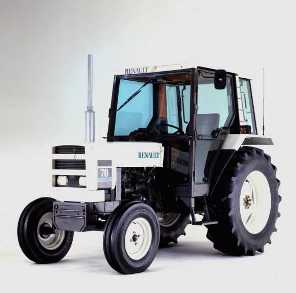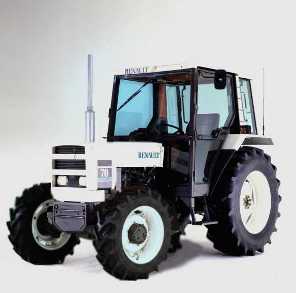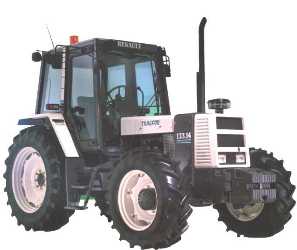Overview of all Renault
agricultural machines
The first series of tractors for agricultural use
came out just after the First World War. These tractors were based on
the FT–army tank, which were used in this war. The GP–type (on
caterpillar tracks) was the first type, which was directly derived
from the FT tank. Very soon, different versions came on the market,
under which a one equipped with a gas generator, and several with a
petrol or diesel engine.
The type called HO was the first tractor with
wheels. Over the years more different models were made, so Renault
could supply a suitable tractor to every sector. As far as it concerns
tractors, Renault co-oparates with several other brands, such as:
Motomeccanica,
Allis-Chalmers, Carraro, Mitsubishi and Claas. The
latter: Claas owns 80% of the Renault-Agricultural shares since 2004,
which means that from now on the Renault tractor will be sold only in
the Claas colours. The yellow ochre colour could only optionaly be
ordered, but disappeared soon.
1919-1939
From 1919 till 1939 Renault used, just as was the case with the cars,
characters as type indication for trucks and buses, but with the
increasing number of models 1 character wasn’t enough, so later on 2
or 3 characters were used as type indication.
|
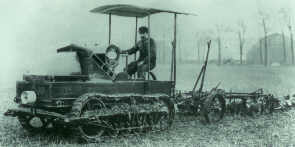
|
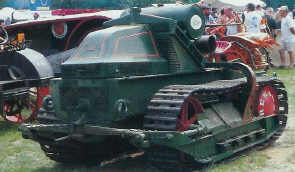
|
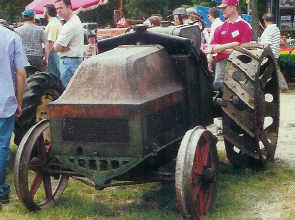
|
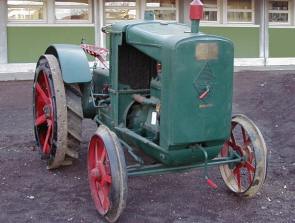
|
|
1919 type GP
|
1920
type HI
|
1921
type HO
|
1926 type PE
|
|
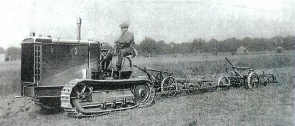
|
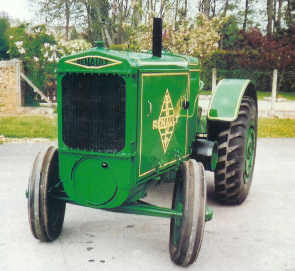
|
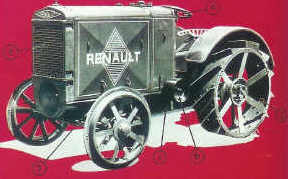
|
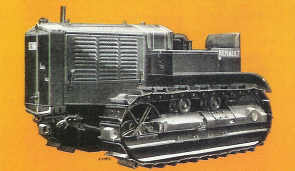
|
|
1926 type PO
|
1928
type RK
|
1931
type PE1
|
1933 type VI
|
|
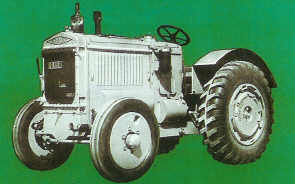
|
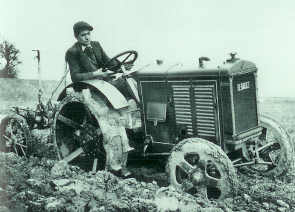
|
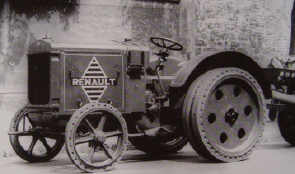
|
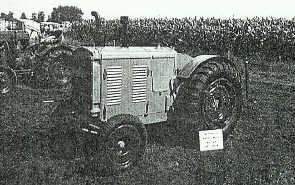
|
|
1933 type VY
|
1934 type YL
|
1935
type PE2
|
1938
type AFV
|
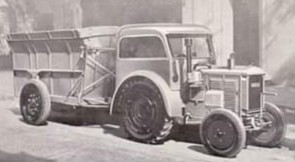 |
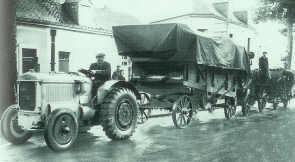
|
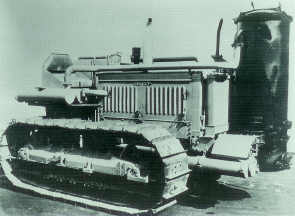
|
|
|
1938
type AFV "85"
|
1939
type AFX
|
1939
type AFM
|
|
1940-1945
The outbreak of the second World War had a great influence on
industrial production in Europe. Because of feedstock shortage Renault
was forced to produce only a limited series of new tractors, stripped
of all its trimmings.
|
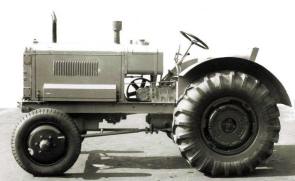
|
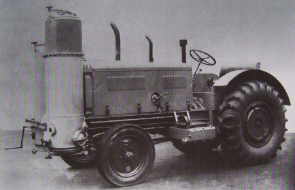 |
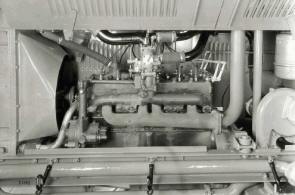
|
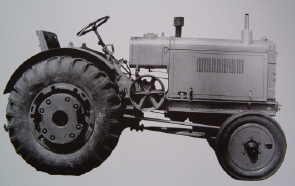
|
|
1941
301D
|
1941
301H |
1941
302H
|
1941 303D
|
|

|
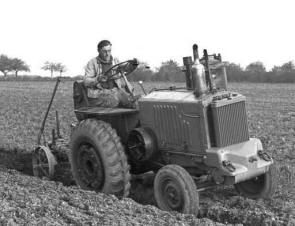 |

|

|
|
1942
304
|
1942
304H
|
1942
305
|
1942
306
|
|

|
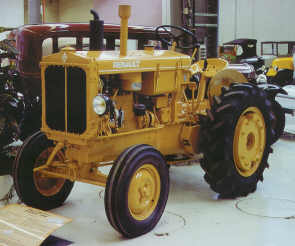
|
|
|
|
1942
307H
|
1944 304 E1
|
|
|
1946-1955
After this war Europe was
reconstructed with all one’s strength. There was a great demand for
tractors in order to bring the production of food to standard. World War
II didn’t leave Renault undamaged, moreover, the works had been bombed and
Louis Renault died under mysterious circumstances. A few months after
liberation the factory was brought under public ownership. A new model
came out, based on already existing techniques. Now 4 numerals were used
as type name. Renault used sources of power which came from their own
factory and from Hispano-Hercules and Perkins.
De R-nummers
(bestaat uit 4 cijfers)
Het
eerste cijfer geeft aan wat voor soort voertuig het is: 1=auto,
2=bestelauto benzine, 3= tractor benzine, 4= bestelauto en vrachtauto
diesel en 7=tractor diesel.
De
overige cijfers geven aan welke uitvoering het is, aanduiding van de
techniek (motor- en chassisvariant) en het soort remmen, radiateur en
ophanging dat worden gebruikt.
|
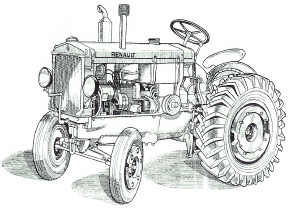
|
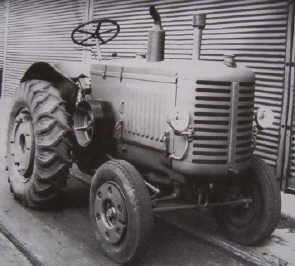
|

|
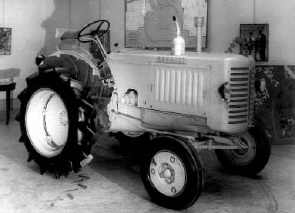
|
|
1946 R3040
|
1948 R3041
|
1949 R3042/R3082
|
1949 R3043/R3083
|
|
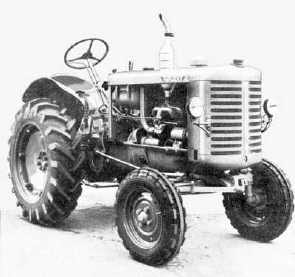
|
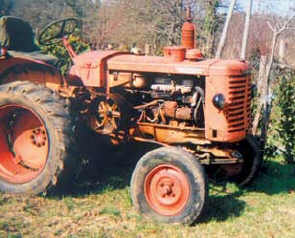 |
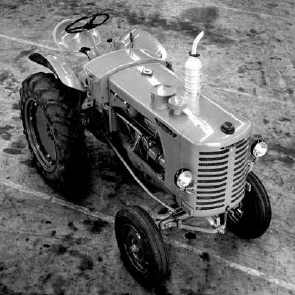
|
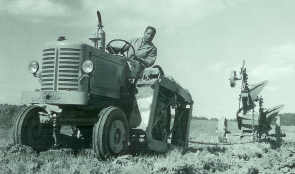
|
|
1949 R3044/R3084
R3045/R3085
|
1951 R7012
|
1951 R7013
|
1951 R7022
|
|
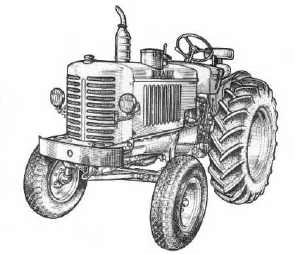
|
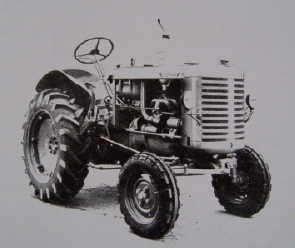
|

|
|
|
1951 R7023
|
1954 R3046
|
1954 R7012 leger
|
|
1956-1961
In the
fifties the mechanization of agriculture was well under way. Sales figures
were on the rise, as well as the average engine power. The whole new D- en
N-series were tailored to the demands of the modern farmer, and in 1956 the
diesel-engine was the most popular source of power, especially after the
introduction of the purpose-made agricultural diesel (red-dye diesel).
Renault purchased all its air-cooled engines at MWM (Motor Werke Mannheim)
in Germany, but also used water-cooled Perkins-engines, bought in the USA.
The type N stood for normal width, type E for narrow gauge and type V for
the wine grow version. It was from 1960 to 1963 that the Renault program
included the Motomeccanica Super 108, due to the great demand for even more
engine power.
|
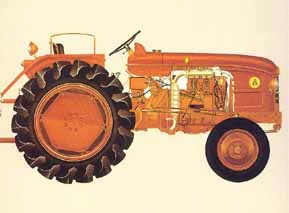
|
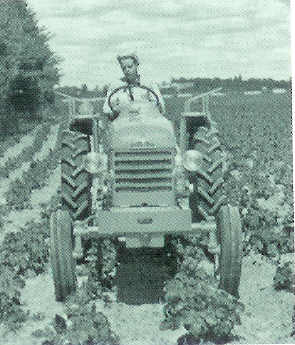 |
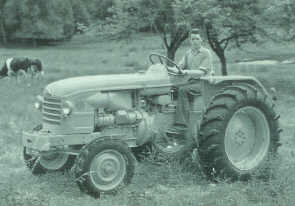 |
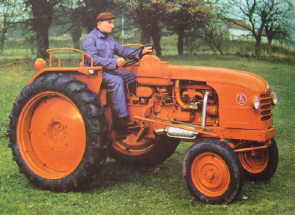 |
|
1956 D22
R7052
LEES MEER! |
1956 D30 R7051
|
1956
D35 R7050 |
1956
E30 R3050/R3051
|
|
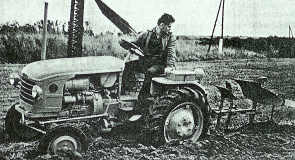 |
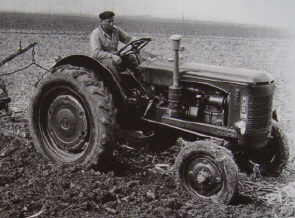
|
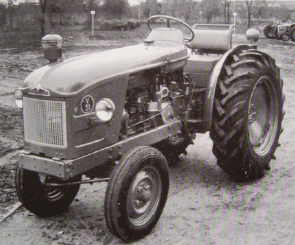 |
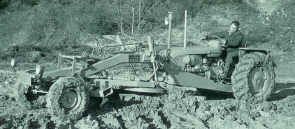 |
|
1958 D16 R7053
|
1960
Motomeccanica Super 108 R7053 |
1960
N, E,
V31 R3051 |
1960
N, E,
P70 R7050 |
|
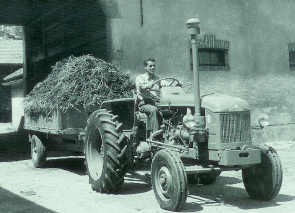 |
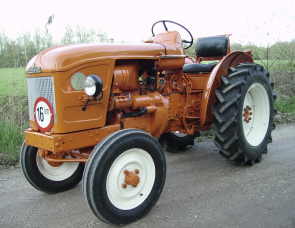 |
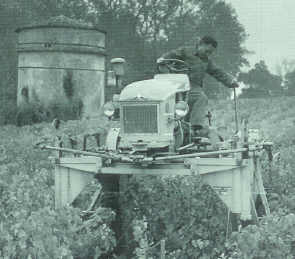 |
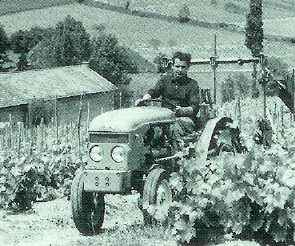 |
|
1960
N ,E,
V71 R7051 |
1960 N,
E, V72 R7052
|
1960
N73/Junior R7053 |
1960 V73/Junior
R7053 |
|
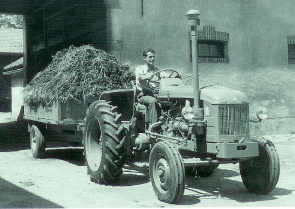
|
|
|
|
|
1960
N71 Super R7055
|
|
|
|
1962-1966
Towards the end of 1962
Renault introduces the Super-series. First of all the Super 7, its
external features and technically being similar to the N-series.
Outwardly new, technically renewed and available in more different
engine powers were the Super 4 and the Super 5, every model
available in the normal, narrow-gauge and wine grow version. The
external features of the Super-Series were renewed in 1964 and two
new types came on the market, the Super 3 and Super 6, with a square
hood and higher rear mudguards as their most striking features. In
1965 all types got a D against their name, a changed grille, but it
was the lifting equipment that had changed most. In the D-Series the
so-called Tracto-control, a kind of automatic depth control of the
lifting equipment, was used for the first time. With one handle one
adjusts the required dept, and with the other handle one can lift
the machine up and down. The required depth is kept up automatically
as adjusted before. Tracto-control also works in case of unevenness
of the ground and maintains substantially the same depth level. The
first four-wheel drive Renault tractors appear on the market in
1966. The Super 2D series was equipped with an Indenor engine and
was available in two colours: (reddish)orange and red, and from the
introduction on the rims of the Super-D series are sprayed white.
And in 1963, as the programme’s peak, first the R385 has been
introduced and somewhat later the Master 1 en Master 2. The Master 1
was equipped with a 4 cylinder, air-cooled MWM-engine and the Master
2 with a 4 cylinder, liquid-cooled Saviem-engine, and with the
latter also available in a four-wheel drive version it where
powerful tractors. The Master TP (Travaux Publics = Public Works)
was a yellow, industrial version of the Master series, designed for,
among others, the French government.
|
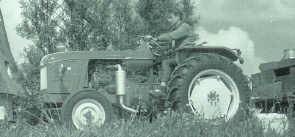
|
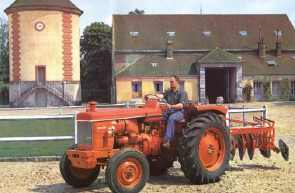
|
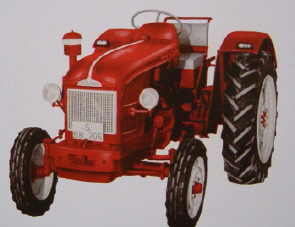
|
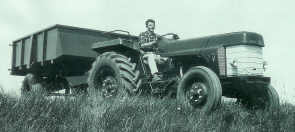
|
|
1962 Super 7 R7055 |
1962
Super 5 R7054
|
1963
Super 4 R7056
|
1963 385 R77
|
|
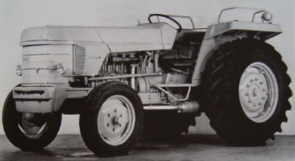
|
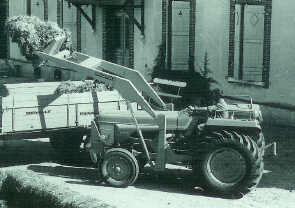
|
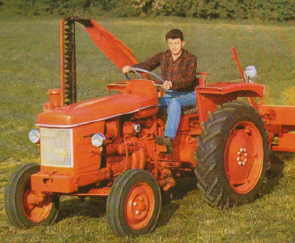
|
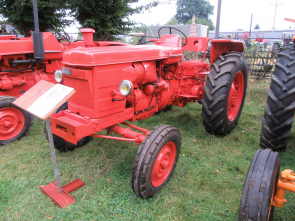
|
|
1963
Master 1 R77
|
1963 Master 2
R78
|
1964
Super 3 R7052
|
1964 Super 6
R7050
|
|
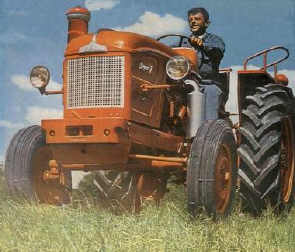
|
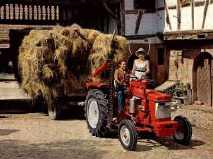
|
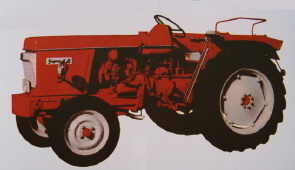
|
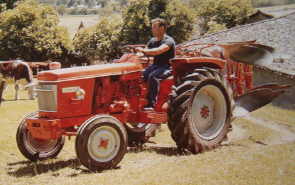
|
|
1964 Super 7
R7055
|
1965
Super 3D R7052
|
1965 Super 4D
R7056
|
1965 Super 5D
R7054
|
|
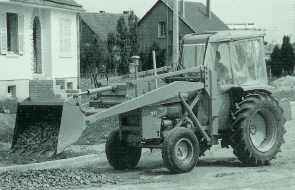
|
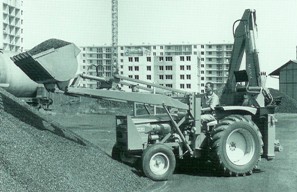 |
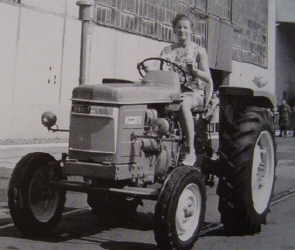
|
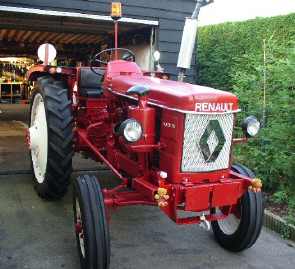
|
|
1965
Super 6D R7050
|
1965
Super 6D industrie
|
1965 Super 7D
R7055
|
1965 Super 7D
R7055
|
|
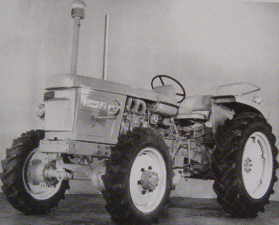
|
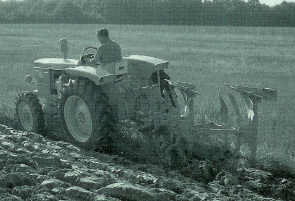
|
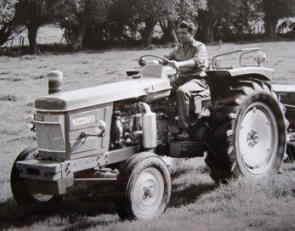
|
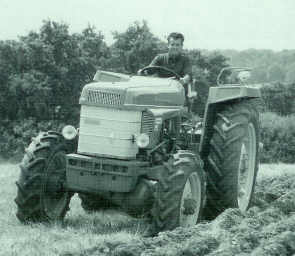
|
|
1966 Super 5D
4x4 R7154
|
1966
Super 6D 4x4 R7150
|
1966
Super 7D R7155
|
1966 Master
1/2
R717/R718
|
|
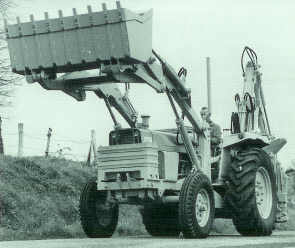
|
 |
|
|
|
1966 Master 1 TP
R777
|
Master B |
|
|
1967-1971
In March 1967,
Renault started with a completely new range of models. Especially esthetics
became important with the introduction of the 50- and 80- series. A well
designed hood with build-in head lights gave the Renault tractor its own
identity. The engines that were used were once again made by MWM. The 4wd
types could be recognized by the number “4” in front of the type. In 1969,
Renault launched the 90-series, which was introduced because of the growing
demand for higher HP, combined with 4wd traction. These were the first
tractors that were originally delivered with standard cabin, a new hood and
splash-boards. At the end of the 60's power steering was used more and more
often and a special series of narrow and winery tractors were made in 1968,
the Renault 50, 60, 70 and 80. The American market also proved to be
important when Renault had to build a 40HP tractor for Allis-Chalmers, the “One-Sixty”,
which was based on the Renault 50 series (standard track), After a couple of
different production lines, the love between Renault and Allis-Chalmers was
over. A last effort to work together was model 1451, which was shown in
Paris during 1973, but was never sold in Europe. It was an Allis-Chalmers,
wrapped in Renault sheets.
|
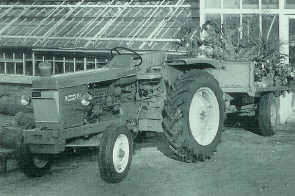
|

|

|
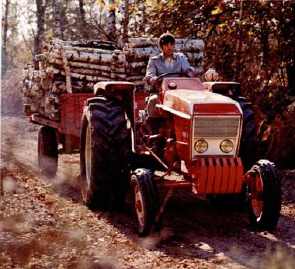
|
|
1967
Super 2D R7201
|
1967
53 R7211
|
1967 55
R7231
|
1967
56 R7251
|
|
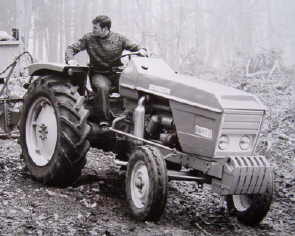
|

|

|
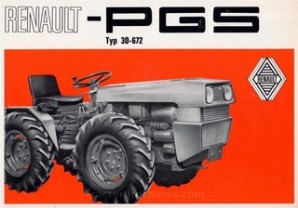 |
|
1967 57 R7241
|
1967 86 R7281
|
1967 88 R7261
|
1967 PGS 30-672/45-673 |
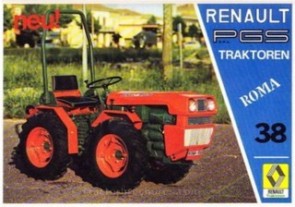 |

|

|

|
|
1967 PGS Roma 38 |
1968
50 R7213
|
1968 51 R7256
|
1968
58 R7291
|
|

|

|

|
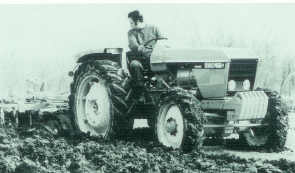
|
|
1968 60
R7253
|
1968
70 R7252
|
1968 80
R7282
|
1968
456 R7255
|
|

|

|

|
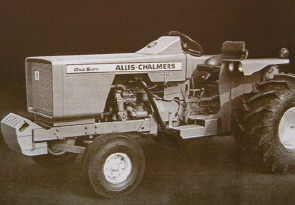
|
|
1969
94 R7611
|
1969
96 R7631
|
1969
AC One-Sixty R7301
|
1969
AC one sixty R7301
|
|

|

|

|
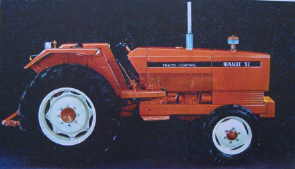
|
|
1970 82 R7288
|
1970 89 R7341
|
1970 91 R7614
|
1970 92 R7601
|
|

|
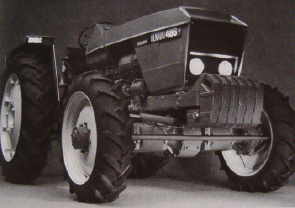
|
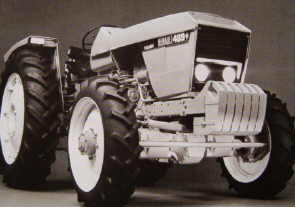
|
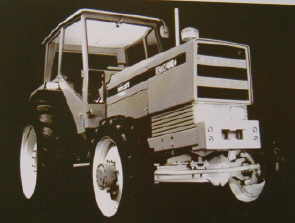
|
|
1970 98 R7651
|
1971 486 R7285
|
1971 489 R7345
|
1971 496 R7635
|
|
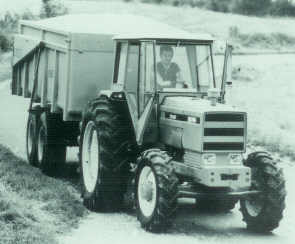
|

|

|
|
|
1971
498 R7655
|
1971
AC LCG R7302
|
1971 AC Economic
R7307
|
|
1972-1980
Starting in 1972,
Renault used Carraro front axles in al its tractors. These were made in
Italy and caused, once again, another cooperation, which also resulted in
Renault buying a large amount of shares in that company in 1974. At the
beginning of 1973, this led to the introduction of 3 new types. They were
Carraro machines, sprayed in Renault colors, tagged by the Renault type
number, an added “R” and the name “Renault”. In May 1973, Renault started
the introduction of a new series that was to become the most expanded one in
all of Renault's history. Almost 80 different types, starting with the 301
and ending with the 1451-4. Depending on the model, an “S”- or “M”- type was
created. A new nose, new cabins, MWM engines (sometimes with 4wd), tracto-control,
different gear boxes, absolutely anything was possible. Tractors with higher
power were launched in 1974. The Renault 460, which was created in 1975, was
the last addition to the first special series of narrow and winery tractors.
In 1976, the complete narrow series was modernized. The whole series was
tagged with an “S” at the end of their name. Exterior-wise, they could be
recognized by their black goggles, which surrounded the head lights. A “4”
was added in front of the type for the 4wd models. In 1977, the 571-4 was
slightly changed. The head lights were moved from the bottom to the middle
of the grille. All types, starting with the 781, were given a new super
luxury cabin in 1977 as a standard option. This was also added to the 461,
the 551 and the 654 in 1979. At the beginning of 1980 another 2 new Carraro
tractors were released, which had a new exterior.
|
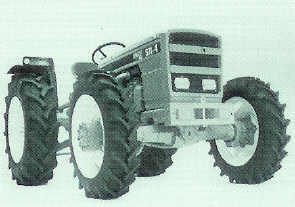
|
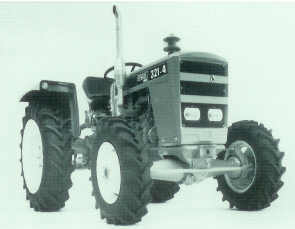
|
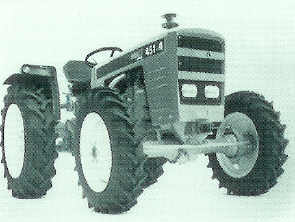
|
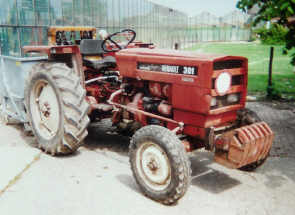
|
|
1972 571-4
Carraro R7223
|
1973 321-4
Carraro R7221
|
1973 451-4
Carraro R7222
|
1973 301
R7411
|
|

|

|
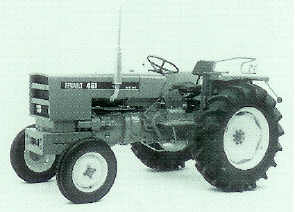
|

|
|
1973 361 R7421
|
1973 421 R7431
|
1973 461 R7431
|
1973
461 R7441
|
|

|
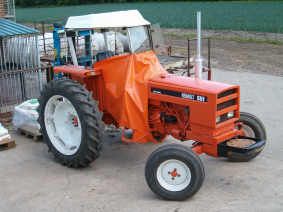
|
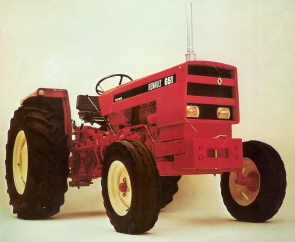
|
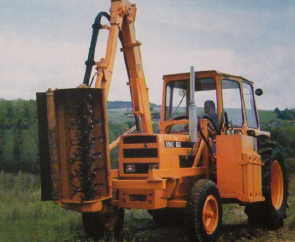
|
|
1973
462 R7442
|
1973 551 R7451
|
1973
651 R7461
|
1973
652 R7462
|
|
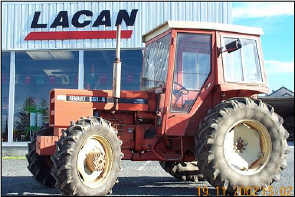
|
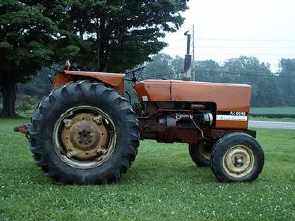
|
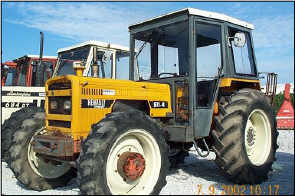
|
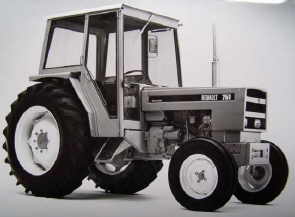
|
|
1973
651-4 R7464
|
1973
AC 6040 R7481
|
1974
571-4 Carraro R7224
|
1974 751
R7621
|
|
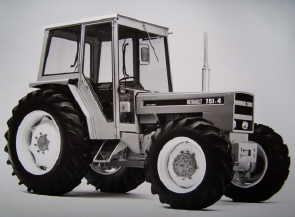
|
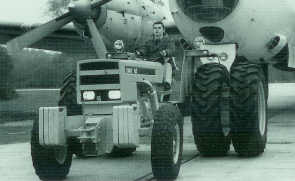
|

|
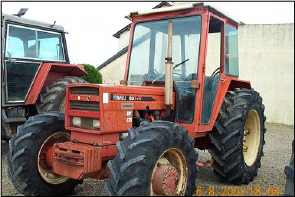
|
|
1974 751-4 R7624
|
1974
752 R7622
|
1974 782 R7622
|
1974 851-4 R7664
|
|
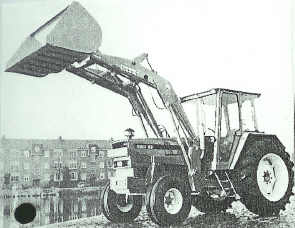
|
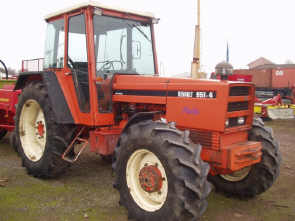
|
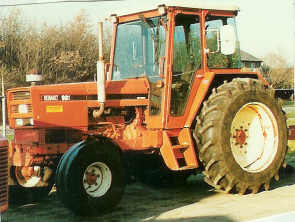
|
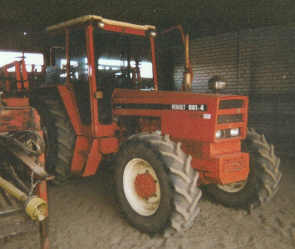
|
|
1974 951 R7641
|
1974 951-4
R7644
|
1974 981 R7641
|
1974 981-4
R7644
|
|
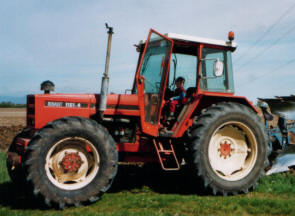
|
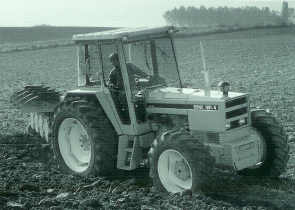
|
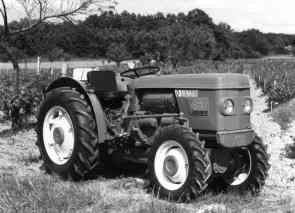
|
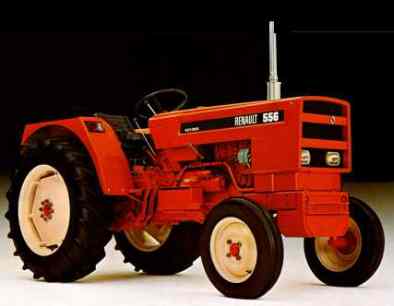
|
|
1974 1151-4
R7674
|
1974 1181-4
R7674
|
1975
460 R7257
|
1975 556 R7456
|
|
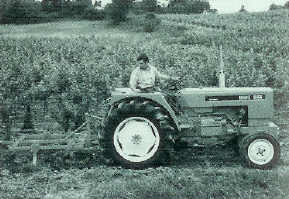
|
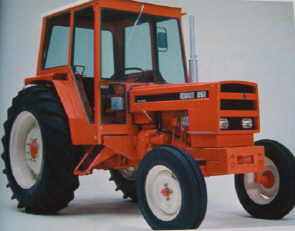
|
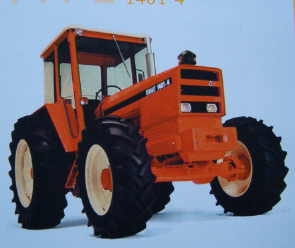
|
 |
|
1975 656 R7466
|
1975 851 R7661
|
1975
1401-4 R7694
|
100 |
|
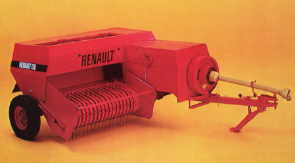 |
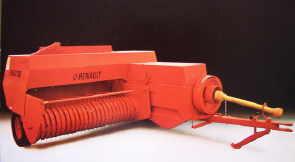
|
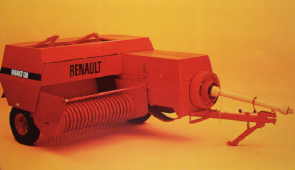 |
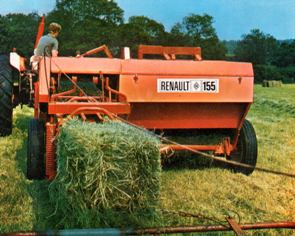 |
|
1975 120
|
1975 125
|
1975 130
|
155
|
|
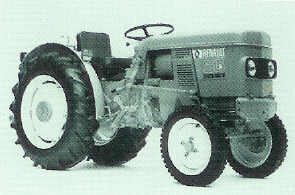
|
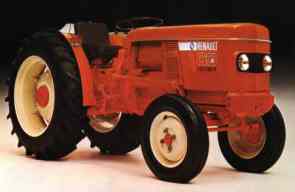
|
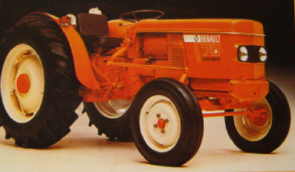
|
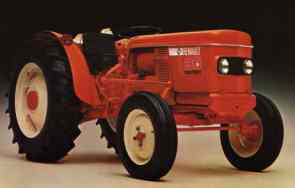 |
|
1976
50S R7365
|
1976
60S R7375
|
1976
70S R7376
|
1976
80S vignes R7385
|
|
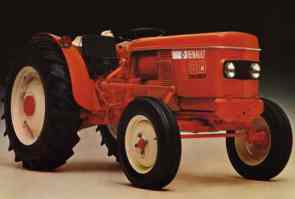
|
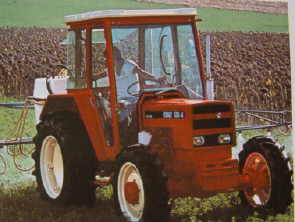
|
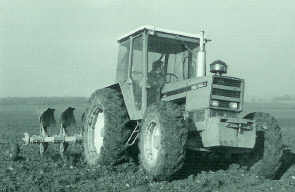
|
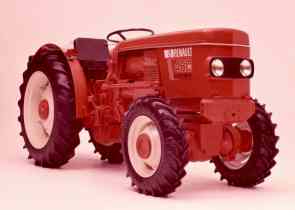
|
|
1976 80S verger
R7386
|
1976 551-4 R7454
|
1976
1451-4 R7694
|
1977 460S R7377
|
|
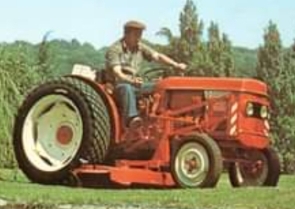 |
 |
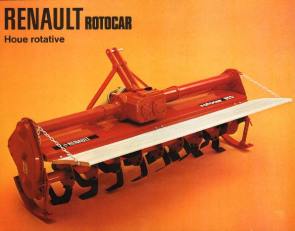 |
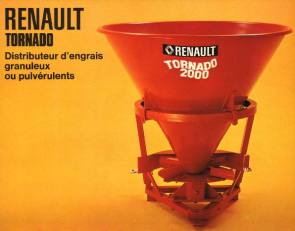 |
|
50S Espaces Verts |
741-4 |
Rotocar |
Tornado |
|
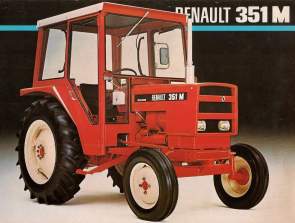 |
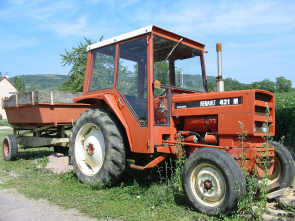
|
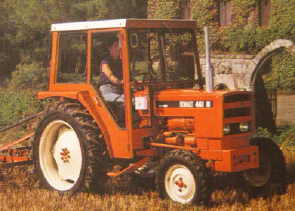
|
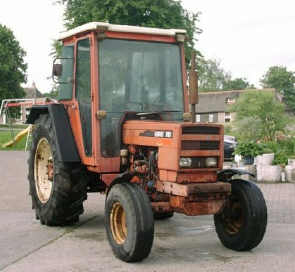
|
|
1977 351M R7411 |
1977 421M R7421
|
1977 461M
R7431
|
1977 781 R7591
|
|
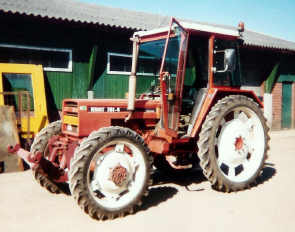
|
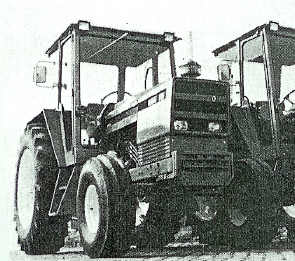
|

|
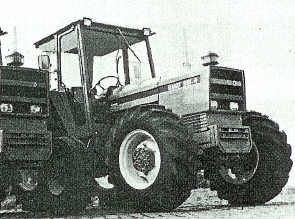
|
|
1977 781-4 R7594
|
1977 891 R7681
|
1977 921 R7681
|
1977 891-4
R7684
|
|
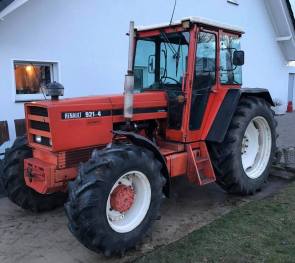 |
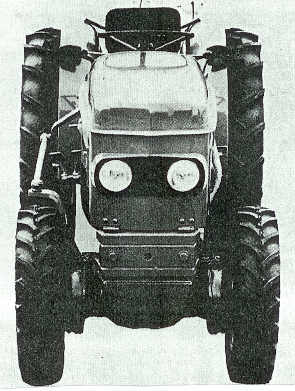
|
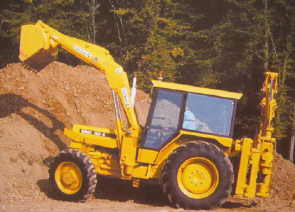
|
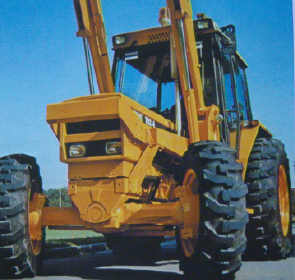
|
|
1977
921-4 R7684
|
1978
480S R7387
|
1978
752-4 R7624
|
1978 782-4 R7624
|
|
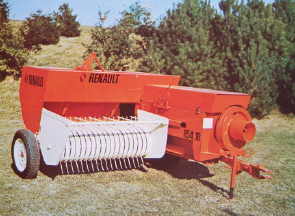 |
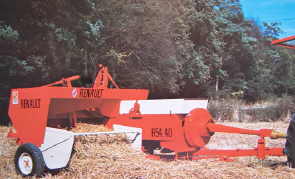 |
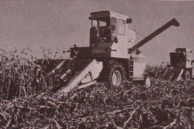 |
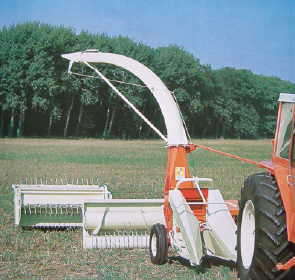 |
|
1979
54-10/54-17/54-18/54-19/54-20 |
1979
54-25/54-30/54-40/54-50
|
1979 ABM 480
|
1979
56-10/56-40/56-50
/56-60/56-60T/56-60P
|
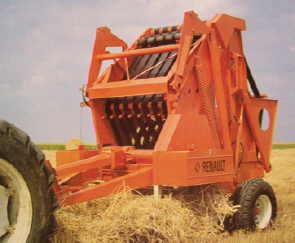 |
 |

|
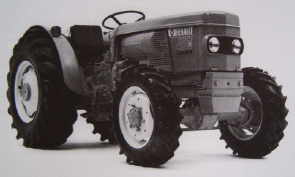
|
|
1979 54-80(A)/54-85
|
1979 RC385/395 |
1979 90S R7396
|
1979 490S R7398
|
|
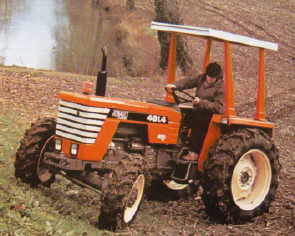
|
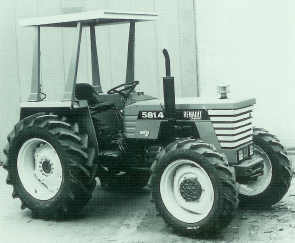 |
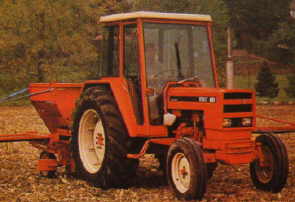
|
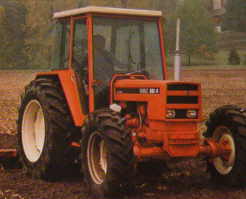 |
|
1980 481-4
Carraro R7225
|
1980
581-4 Carraro R7226
|
1980
681 R7491
|
1980
681-4 R7494
|
|
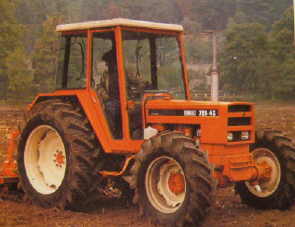
|

|
|
|
|
1980
751-4S R7504
|
1980 891S R7681
|
|
|
1981-1988
In 1981, during Sima,
an agricultural show in Paris, absolutely everyonewas astonished by the
newly introduced TX-series. A new generation of tractors that was leaving
all the competitors behind them. On top, this was the first series to be
released in a new color scheme: Anthracite- ochre white. These tractors
scored max when it comes to technique and comfort. Initially, only 6
cylinder engines were used, but these were later also downgraded to 4
cylinder versions. Due to the high demand for a cheap TX version, the TS was
released. The known S-series was slowly phased out because of the TX. More
smaller versions of the TS series were made a 2 new Carraro types were
issued in 1982. These were released in the Renault color scheme and were
provided with Perkins engines. At the end of 1987, the Carraro story was
over. The narrow series was completely revised in 1984 and the new type of
name, the TX- and TS-, were now used. A combination of numbers, completed
with a letter. The V (Vigneron) or the F (Fruitier) were added. The biggest
external changes were the new grille, front and side, and the new layout of
the name and type on the hood. In 1984, the TX- and TS-series were
accompanied by the RS-series, which were equal to the TS-series, but had a
cheaper and more simple cabin. These were available with different engines.
A small side note from the 80's was the D-series, which were bought from
Mitsubishi. These small tractors were somewhat adjusted to live up to the
Renault criteria. Halfway the 80's Renault had a very extensive agricultural
offer. Apart from that, Renault had allot to offer to the industry in
general. Especially the French government was a good customer. The bought
allot of special machines. The 600, 700 and 800 M and H models were
available in allot of different shapes for specific purposes. New in 1986
was the LS-series with MWM engines. These were also available with Perkins
engine and could be recoginzed by their type “SP”. When the narrow and
D-series came to an end during the end of 1986, Renault is ready for a new
generation of garden and winery tractors. The V, F and LB series were
announced. Each were very specific machines and were made differently from
customer to customer. Biggest news in 1987 was the introduction of the TZ
cabin. A cabin that was mounted of 4 shock absorbers was once again a
progressive step with regard to the competition.
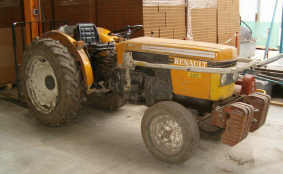 |
 |
 |
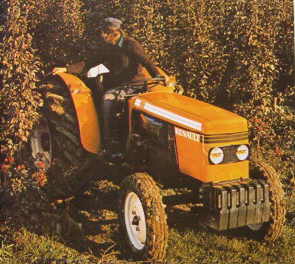 |
|
1981
60S R7375 |
1981 80S
verger R7386 |
1976
80S vignes R7385 |
1981
90S R7395
|
|
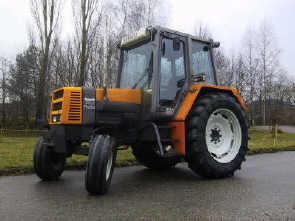
|
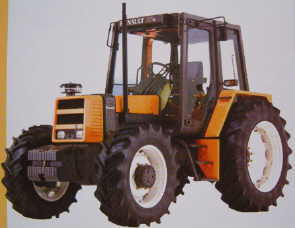 |
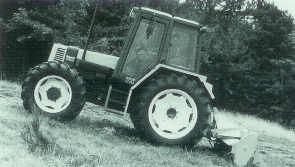
|
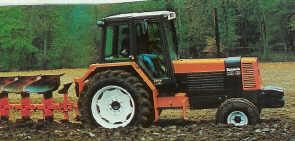
|
|
1981 103-12
TS/TX
R7821/
R7812 |
1981 103-14 TS
R7822 |
1981 103-14 TX
R7822 |
1981 113-12
TS/TX/RE
R7921 |
|
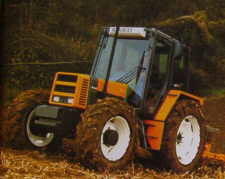
|
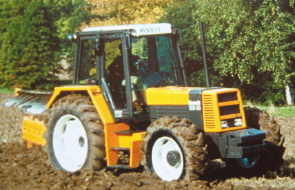 |
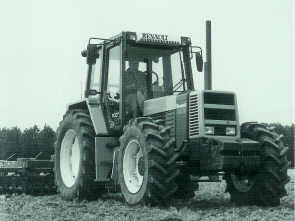
|
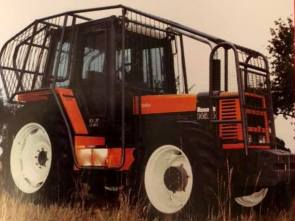 |
|
1981 113-14 TS/TX/RE
R7922/R7923
|
1981 133-14
TS/TX
R7932 |
1981 145-14 TX/RE
R7942 |
145-14 TX
protection forestière |
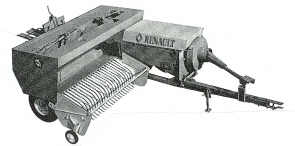 |
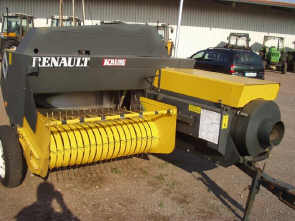 |
 |
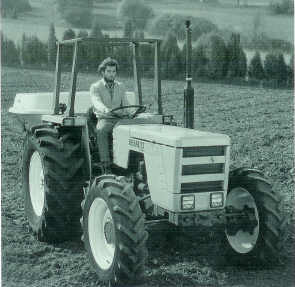
|
|
1981
Opraappers |
1981
Hooi-/stro-pers |
1982 501-4
Carraro R7227 |
1982 601-4
Carraro R7229 |
|
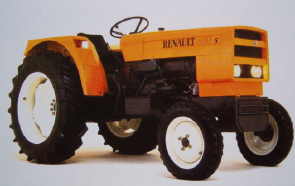 |
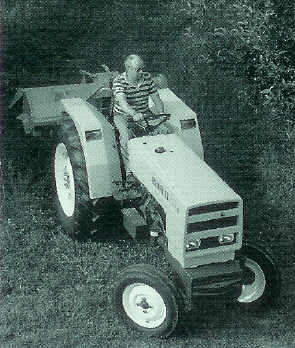 |
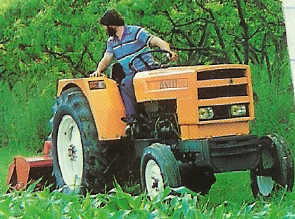
|
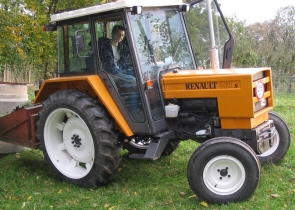 |
|
1982 466S
R7446 |
1982 556S
R7456 |
1982 656S
R7466 |
1982 461S
R7441 |
|

|
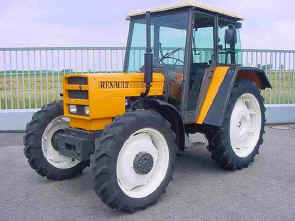
|
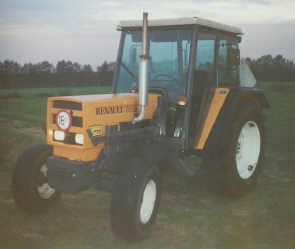
|
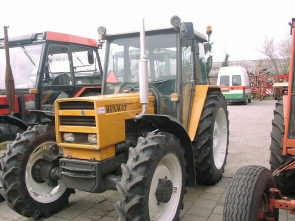
|
|
1982 551S
R7451 |
1982 551-4S
R7454 |
1982 651S
R7461 |
1982 651-4S
R7464 |
|
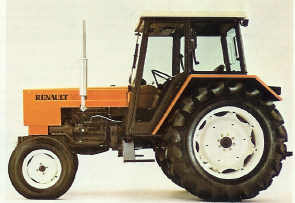
|
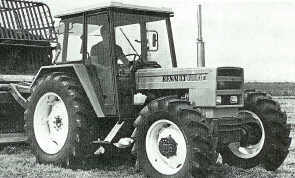
|
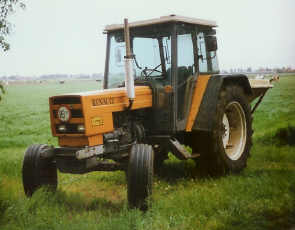
|
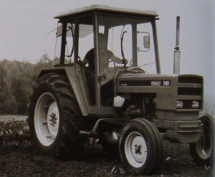 |
|
1982 681S
R7491 |
1982
681-4S R7494
|
1982 751S
R7501 |
1982
741 R7741 |
|
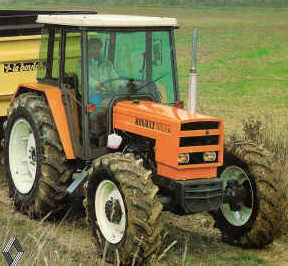
|

|
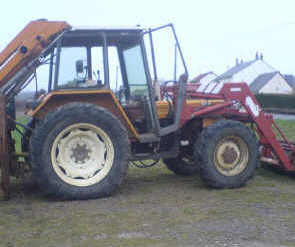 |

|
|
1982 751-4S
R7624 |
1982 781S
R7591 |
1982 781-4S
R7594 |
1982 851S
R7661
|
|
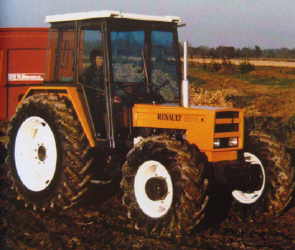
|

|
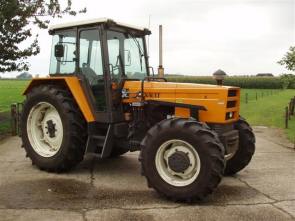
|

|
|
1982 851-4S
R7664 |
1982 891S
R7684 |
1982 891-4S
R7684 |
1982 921S
R7681 |
|

|

|

|

|
|
1982 921-4S
R7684 |
1982 981S R7641
|
1982 981-4S
R7644 |
1982 1181-4S
R7674 |
|
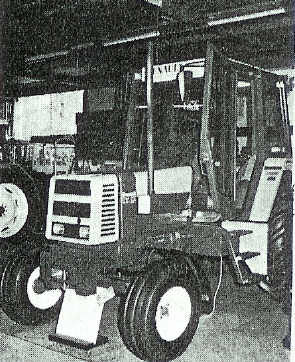
|
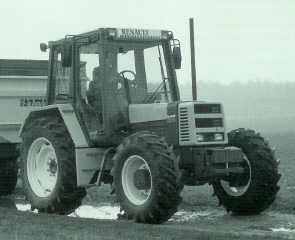
|
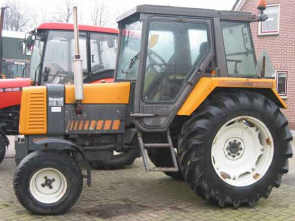
|
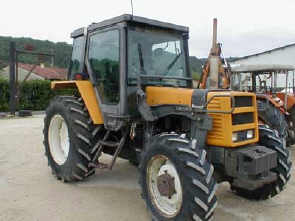
|
|
1982
95-12 TS/TX R7811
|
1982 95-14
TS/TX
R7812 |
1983 68-12 RA/RS
R7721 |
1983 68-14 RA/RS
R7722 |
|
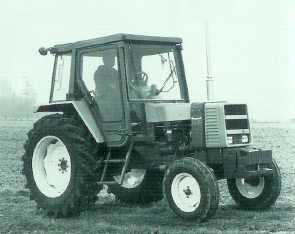
|
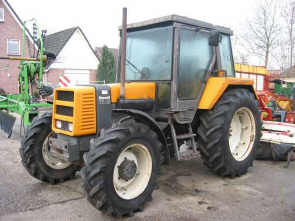
|
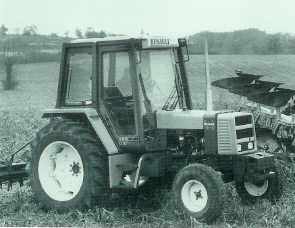
|
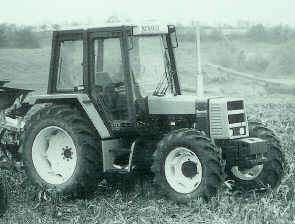
|
|
1983 75-12
RA/RS
R7731 |
1983 75-14
RA/RS R7732
|
1983 75-12 TS
R7731 |
1983 75-14 TS
R7732 |
|
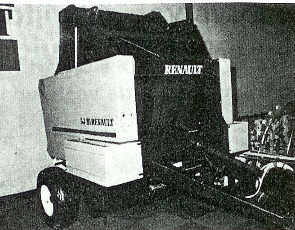
|
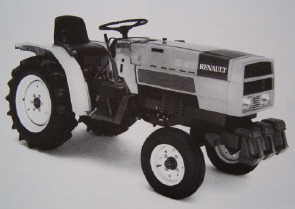
|
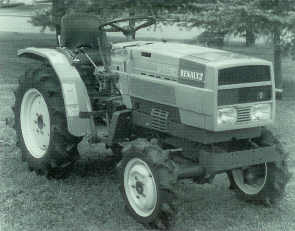
|
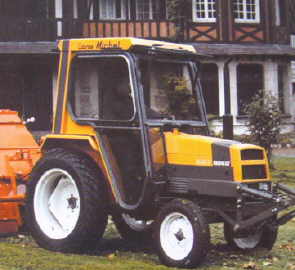
|
|
1983 Rondbaalpers
|
1984 18-12D
R7551 |
1984 18-14
D/HD R7552
|
1984 24-12D
R7561 |
|
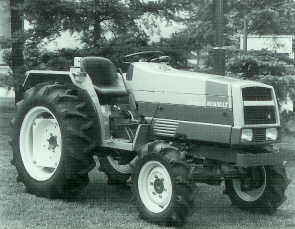
|
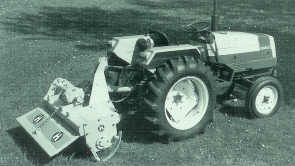
|
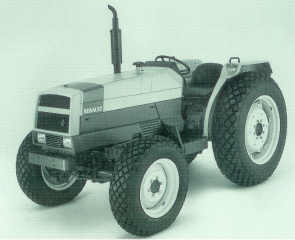
|

|
|
1984 24-14D
R7562 |
1984 32-12D
R7571 |
1984 32-14D
R7572 |
1984
32-50F |
|

|
 |

|
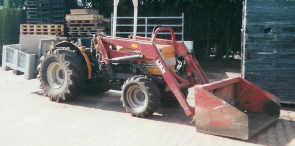
|
|
1984 32-50V/EV
R7375 |
1984 32-60F
R7386 |
1984
32-60V R7385 |
1984 34-60V
R7387 |
|

|

|

|
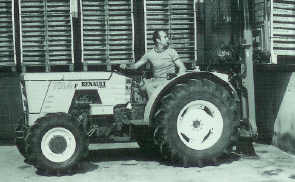
|
|
1984 42-70F
R7396 |
1984 42-70V
R7395 |
1984 44-70F
R7398 |
1984 701-4F
Carraro R7278 |
|
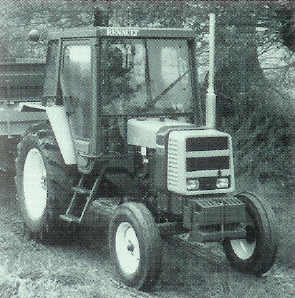
|

|

|
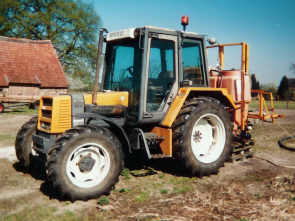
|
|
1984 61-12
RA/RS
R7711 |
1984 61-14
RA/RS R7712 |
1984 80-12 TX
R7731 |
1984
80-14 TX R7732 |
|
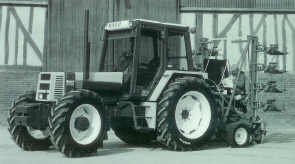
|
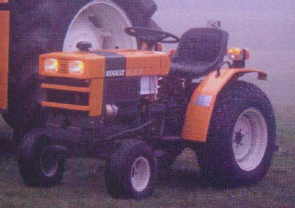
|
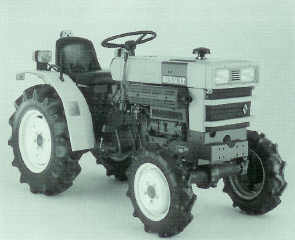
|
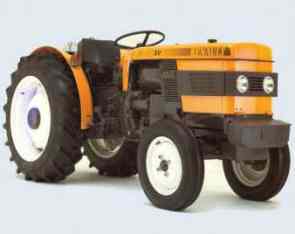
|
|
1984 106-14
SP R7832 |
1985 15-12D
R7541 |
1985 15-14D
R7542 |
1985 32-50SV
R7365 |
|

|
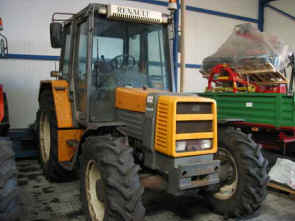
|

|

|
|
1985 80-12
TX R7761 |
1985 80-14 TX
R7762 |
1985 95-14 RE/RS
R7811/
R7812 |
1985 103-12
RE/RS R7821 |
|
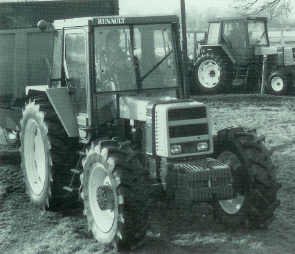
|
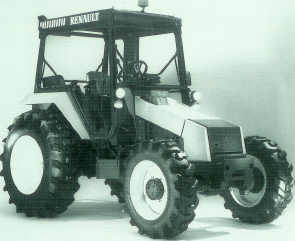
|
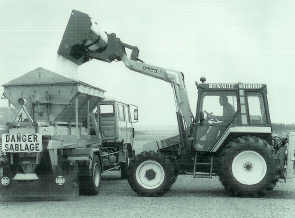
|

|
|
1985 103-14
RE/RS
R7822 |
1985 704M
R7752 |
1985 724M
R7752 |
1985 704H
R7752 |
|
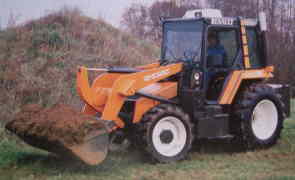 |
 |
 |

|
|
1985 724H
R7752 |
1985 700M
R7751 |
1985 720M
R7751 |
1985 700H
R7751 |
|
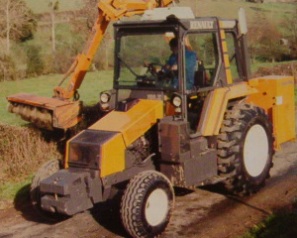 |

|
 |
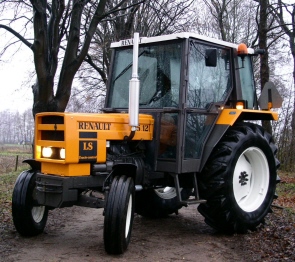
|
|
1985 720H
R7751 |
1986 55-12F
R3246 |
1986 55-12V
R3235 |
1986 65-12 LS
R3121 |
|

|

|

|

|
|
1986 65-14
LS R3122 |
1986 70-12F
R3266 |
1986 70-12 SP
R3131 |
1986 70-12V
R3255 |
|
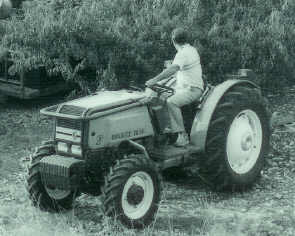
|
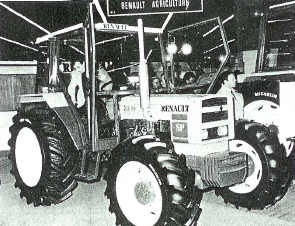
|
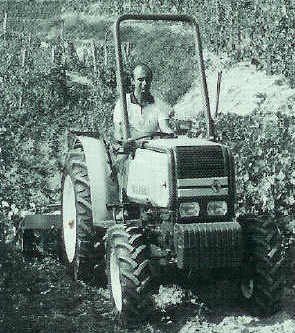
|
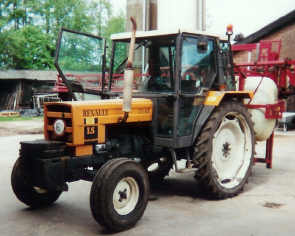
|
|
1986 70-14F
R3268 |
1986 70-14
SP R3132 |
1986 70-14V
R3257 |
1986 75-12
LS R3141 |
|
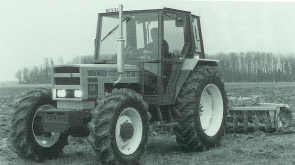
|

|

|
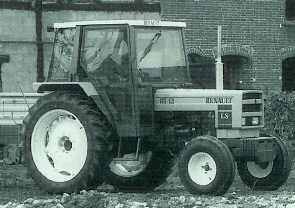
|
|
1986 75-14 LS
R3142 |
1986 80-12F
R3276 |
1986 80-14F
R3278 |
1986 85-12
LS R3161 |
|
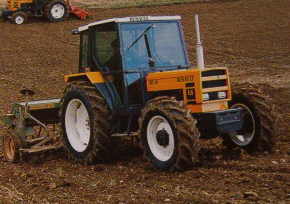
|

|
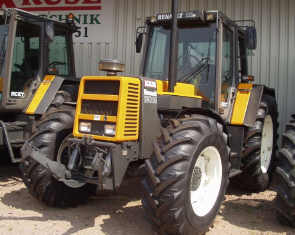
|
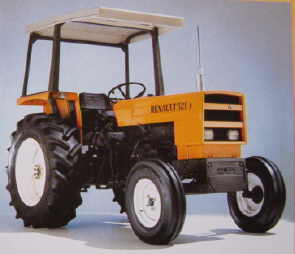 |
|
1986 85-14 LS
R3162 |
1986 110-14 TS/TX/RE
R7912 |
1986 120-14
TS/TX/RE
R7922 |
1986 521S
R7449 |
|
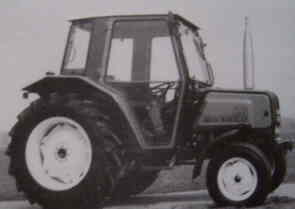
|
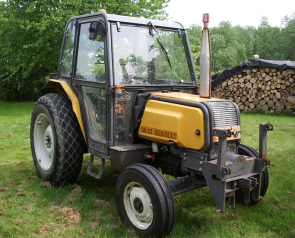
|
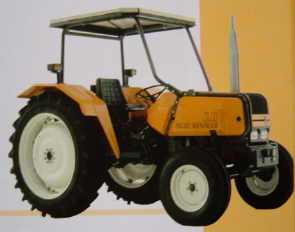
|
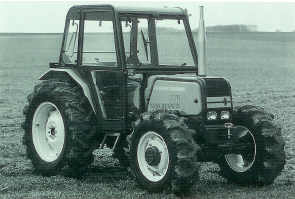
|
|
1987 50-12 LB
R3201 |
1987 50-12V
R3215 |
1987 55-12
LB R3221 |
1987 55-14
LB R3222 |
|
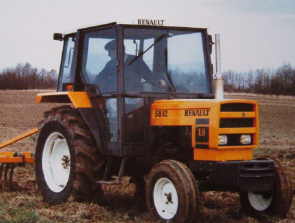
|

|

|
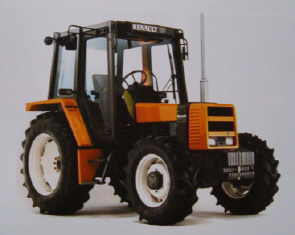
|
|
1987 58-12
LS R3111 |
1987 58-14
LS R3112 |
1987 77-12 TS
R7721 |
1987 77-14
TS R7722 |
|

|
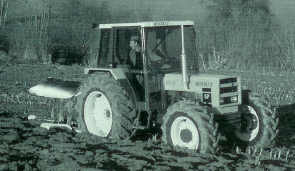
|

|
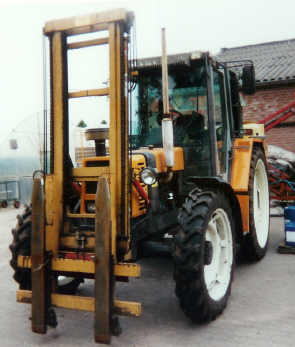
|
|
1987 80-12
SP R3151 |
1987 80-14
SP R3152 |
1987 85-12 TS/TX
R7761 |
1987 85-14 TS/TX
R7762 |
|

|
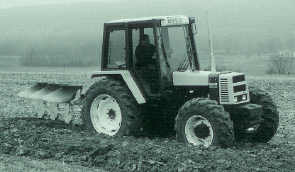
|

|

|
|
1987 95-12
TS R7811 |
1987 95-14
TS R7812 |
1987 103-12
TS R7821 |
1987 103-14
TS R7822 |
|
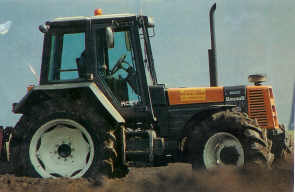
|
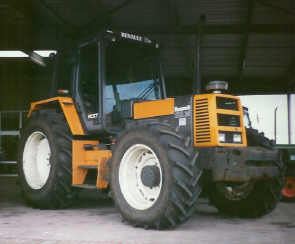
|
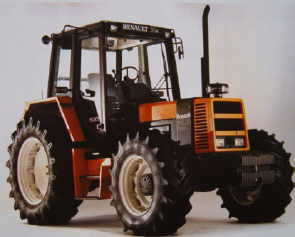
|
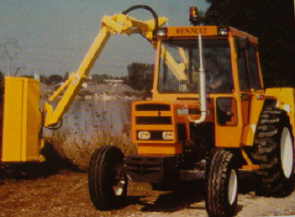 |
|
1987 120-14 TZ
R7922 |
1987
133-14 TZ R7932
|
1987 145-14 TZ
R7942 |
1987 600M
R3123 |
|
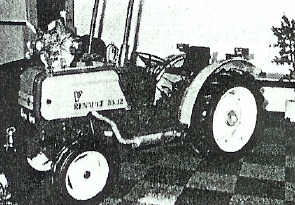
|

|
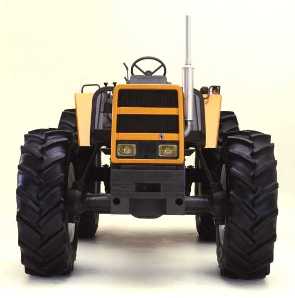 |

|
|
1987 55-12V
R3235 |
1988
55-14V R3237
|
1988 103-14 TE/TA
16
|
1988 110-14
TE/TA R7912 |
|

|
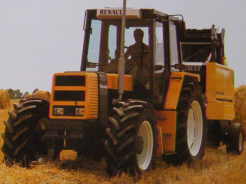
|

|
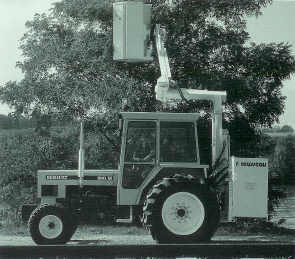
|
|
1988 120-14
TE/TA R7922 |
1988 133-14
TE/TA/TS
R7932 |
1988 145-14
TE/TA R7942 |
1988 800M
R3143 |
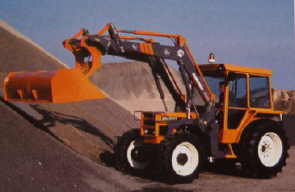 |
|
|
|
|
1988
804M R3144 |
|
|
|
1988-1989
Série spéciale
Om de 70e verjaardag
van Renault Agriculture te vieren verschijnt er een serie witte tractoren
onder de naam "série spéciale". Dit zijn tractoren die voorzien zijn van een
extra groot uitrustingsniveau. Vanwege het succes van deze serie word er een
nieuwe serie witte tractoren geproduceerd onder de naam "tracfor".
1989-1992
On the SIMA show of
1989, Renault presented allot of changes in their programme. The new M- and
P-series were introduced. Furthermore a large diversity of new versions of
the T-series were made. The M-series got a MWM engine and the P-series
received a Perkins engine. Externally their nose resembled the TX-series
allot. The M- and P-series were to be delivered until early 1993. Based on
the T, M and P-series, allot of industrial variants were released under the
names of 600, 700, 800 and 900 MI and MI Hydroshift. Renault has now changed
from a large production line supplier to a highly specialized factory where
almost every machine is uniquely build to the satisfaction of each customer.
Their new top model, the gold metallic NECTRA, was released the end of 1991.
This machine is a TZ-tractor equipped with unsurpassed luxury.
|
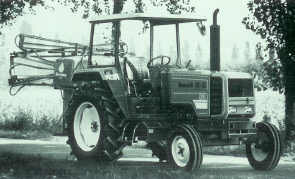
|
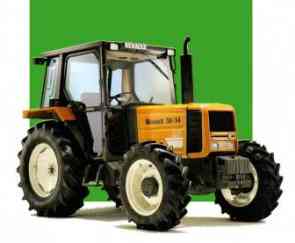
|
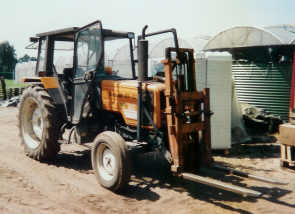
|
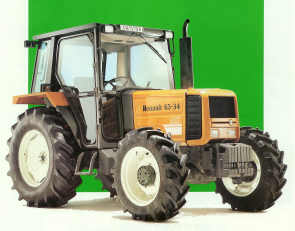
|
|
1989 58-32
ME/MA/MS/MX
R3111
|
1989 58-34
ME/MA/MS/MX
R3112
|
1989 65-32
ME/MA/MS/MX
R3121
|
1989 65-34
ME/MA/MS/MX R3122
|
|

|
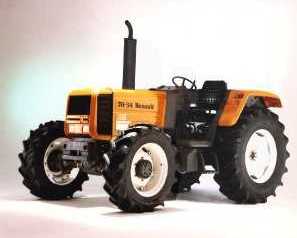
|
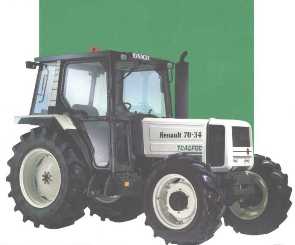 |
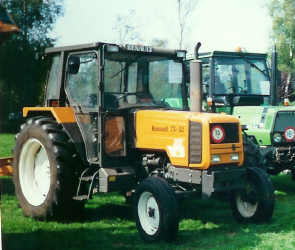
|
|
1989 70-32
PE/PA/PS/PX
R3131
|
1989 70-34
PE/PA/PS/PX
R3132
|
1989 70-34 Tracfor |
1989 75-32
ME/MA/MS/MX
R3141
|
|
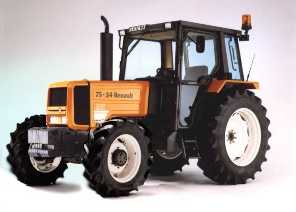
|
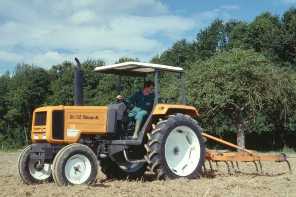
|
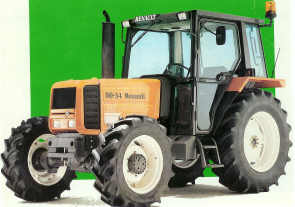
|
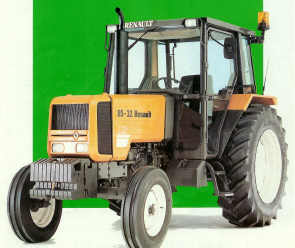
|
|
1989 75-34
ME/MA/MS/MX
R3142
|
1989 80-32
PE/PA/PS/PX
R3152
|
1989 80-34
PE/PA/PS/PX
R3152
|
1989 85-32
ME/MA/MS/MX
R3161
|
|
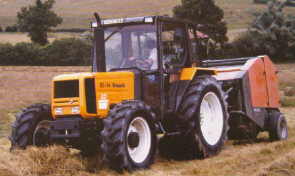
|
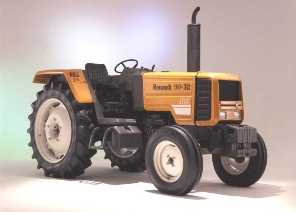 |
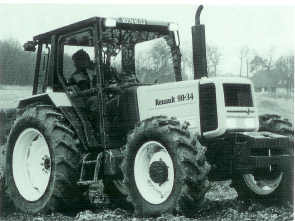
|
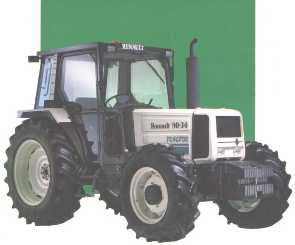 |
|
1989 85-34
ME/MA/MS/MX
R3162
|
1989 90-32 ME/MA/MS/MX
R3171
|
1989 90-34
ME/MA/MS/MX
R3172
|
1989 90-34 Tracfor |
|
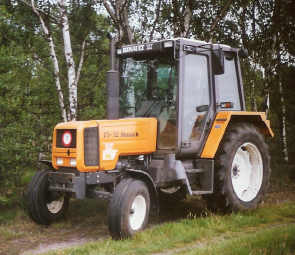
|
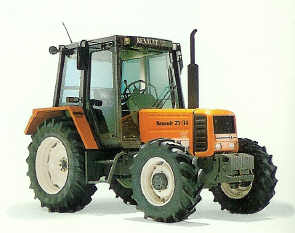
|

|
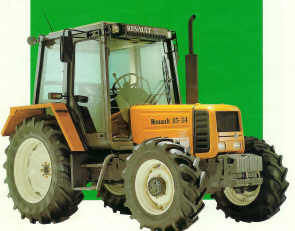
|
|
1989 75-32
TX R7721
|
1989
75-34 TX R7722
|
1989
85-32 TX R7761
|
1989
85-34 TX R7762
|
|
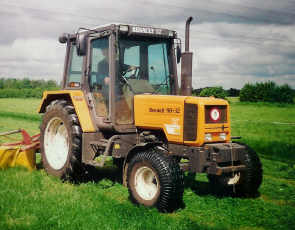
|
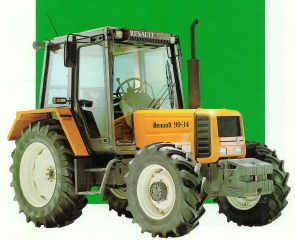
|
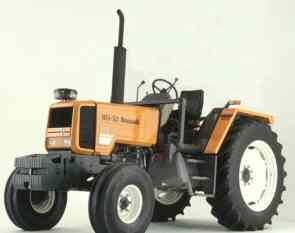
|
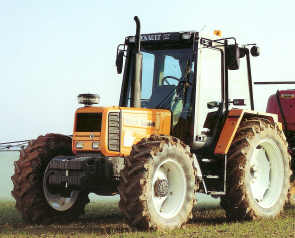
|
|
1989 90-32 TX
R7771
|
1989 90-34 TX
R7772
|
1989 103-52 TE/TA/TS/TX
R7821
|
1989 103-54
TE/TA/TS/TX/TM R7822
|
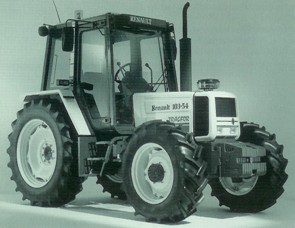 |
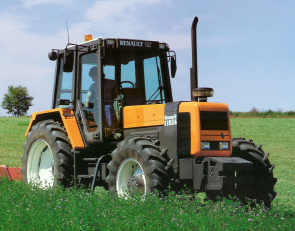
|
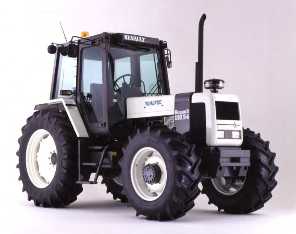 |
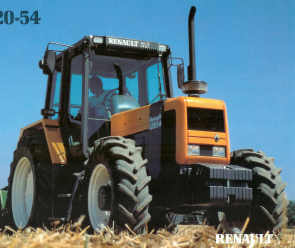
|
|
103-54 Tracfor |
1989 110-54
TE/TA/TS/TX/TZ
R7912
|
1989 110-54 Tracfor |
1989 120-54
TE/TA/TS/TX/TZ
R7922
|
|
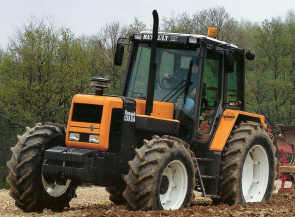
|
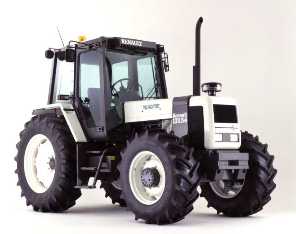 |
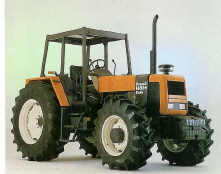
|
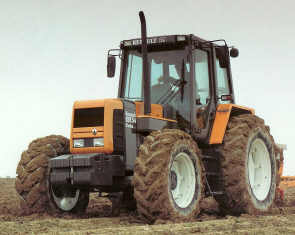
|
|
1989 133-54
TE/TA/TS/TX/TZ
R7932
|
1989 133-54 Tracfor |
1989 145-54 TE/TA/TX/TZ
R7942
|
1989 155-54
TE/TA/TX/TZ
R7952
|
|
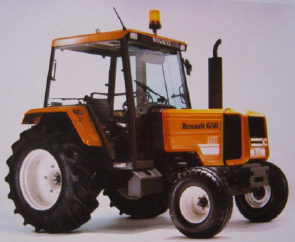
|
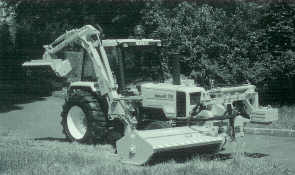
|
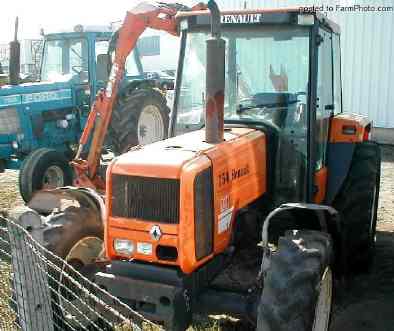
|
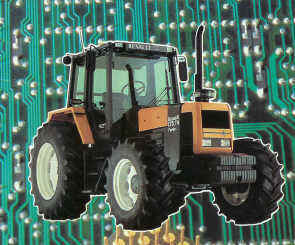
|
|
1989 650 MI
R3123
|
1989 750 MI
R3143
|
1989 754 MI
R3144
|
1990 175-74 TZ
R3852
|
|

|
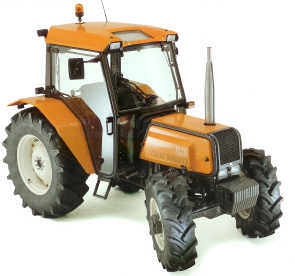
|
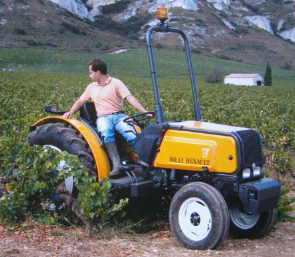
|
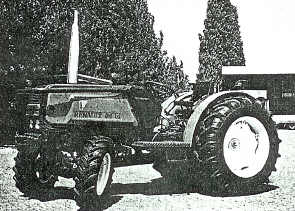
|
|
1991 70-12 LB
R3241
|
1991
70-14 LB R3242
|
1991 80-12V
R3275
|
1991 80-14V
R3277
|
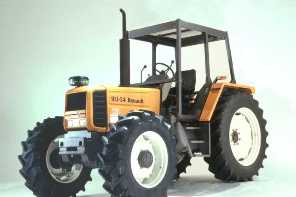 |
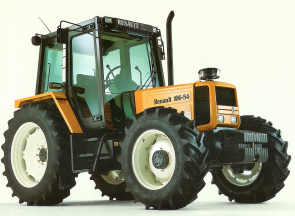
|
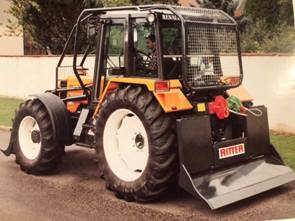 |
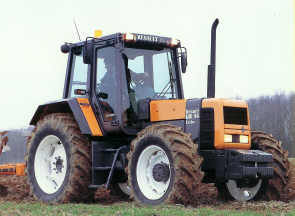
|
|
1991 103-54 TA
|
1991 106-54 TL
Tracfor/TM
R7842
|
1991 106-54 TL Protection Forestière |
1991 180-94 TZ
R3862
|
|
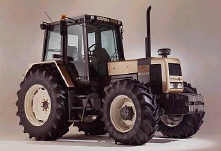
|
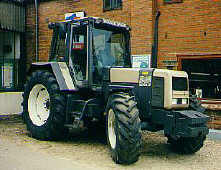
|
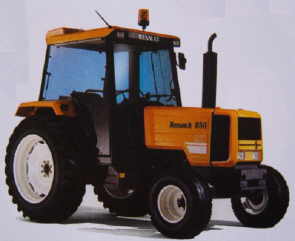
|
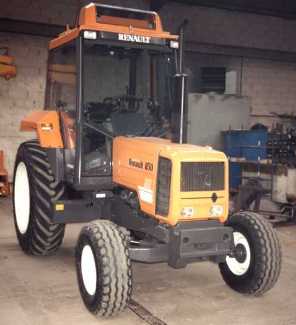
|
|
1991 120-54 TZ
Nectra
|
1991 155-54 TZ
Nectra
|
1991 850
MI R3163
|
1991 850
MI Hydroshift R7763
|
|
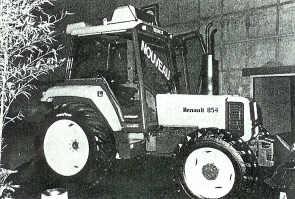
|
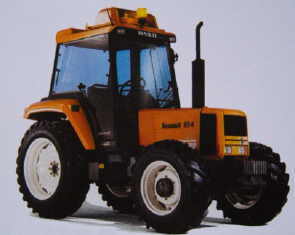
|

|
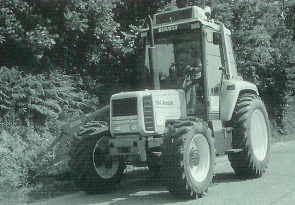
|
|
1991 854
MI R3164
|
1991 854 MI
Hydroshift R7764
|
1991 900
MI Hydroshift R7773
|
1991 904
MI Hydroshift R7774
|
|

|
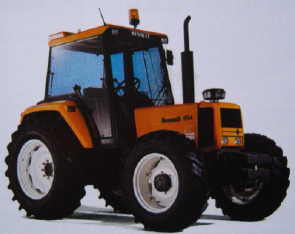 |
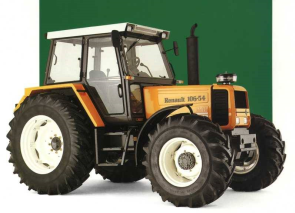 |
|
|
1991
950 MI R7823
|
1991 954 MI
R7824
|
1992 106-54 TM (Mauser cabine) |
|
1993-2003
During the
90's, the design was becoming really important. Styling becomes more and
more daring. Their ever growing improvement for ideas sees that a limited
series of the FT was released in 1992, which was already delivered to
customers in 1993. Shortly afterwards, the new Ceres generation is lurking
around the corner. Round shapes are their new standard. A rounded nose,
splash-boards and roof are taking care of a new modern look. A few years
later, the complete Renault offer is designed to the same standards. The
Ares, Cergos, Ergos and Atles machines are making sure tractor design is
equally important than truck design. The fact that they have been designed
for years now using a PC stresses this. Smaller machines, such as the Dionis,
Fructus and Pales are styled using the new design. Furthermore Renault has
now also delivered machines with more than 250hp for the first time. During
the time that Renault had a complete programme of machines they decide to
shove off their complete agricultural industry, as well as their truck and
bus divisions. Claas, who has been producing fabulous machines for years, is
found to be a very good partner. Renault machines are now being sold in
Claas colors. (Light green and white with red rims) Type names on the other
hand, are kept as they are.
|
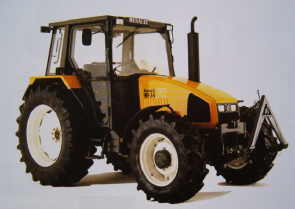
|
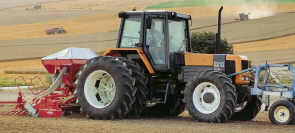
|
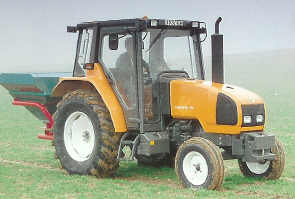
|
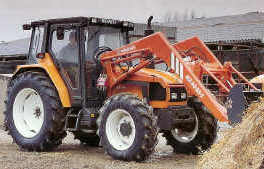
|
|
1993 90-34
FT R3172 |
1993 160-94 TX/TZ
R3842 |
1993 Ceres
65/70/75/85/95
|
1993 Ceres
65/70/75/85/95
|
|
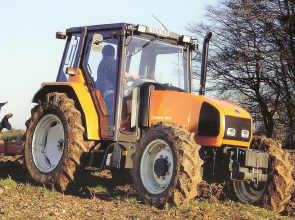
|
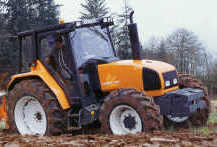
|
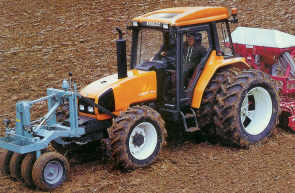
|
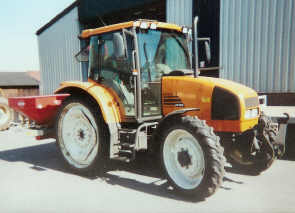
|
|
1993 Ceres
70 X/75 X/85
X/95 X
|
1993 Ceres
70 X/75 X/85 X/95
X |
1995 Ceres
95X Spacial 4x4 |
1996 Ares
540 RX/RZ
|
|
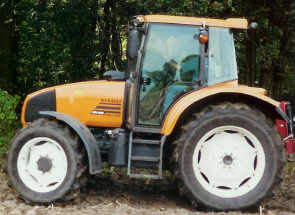
|
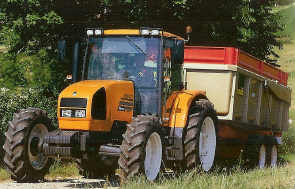
|
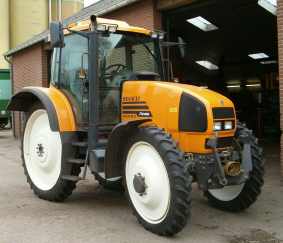
|
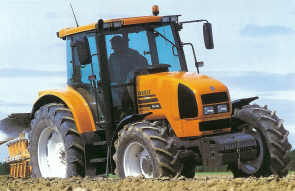
|
|
1996 Ares
550 RX/RZ
|
1996 Ares
610 RX/RZ
|
1996 Ares
620 RX/RZ |
1996 Ares
630 RX/RZ |
|
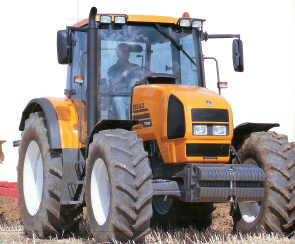
|
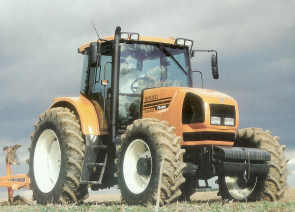
|
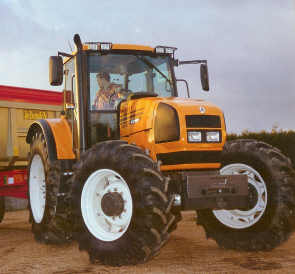
|
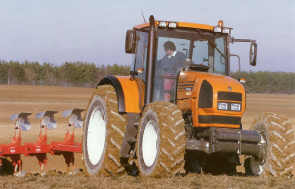
|
|
1996 Ares
640 RZ |
1996 Ares
710/720 RZ |
1996 Ares
725 RZ |
1996 Ares
735 RZ |
|
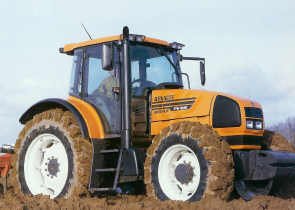
|
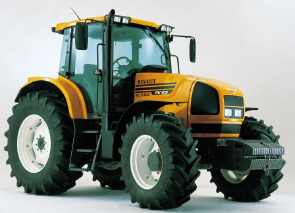
|
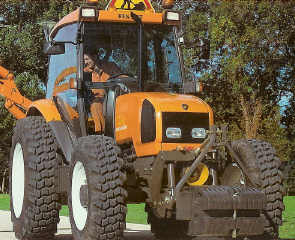
|
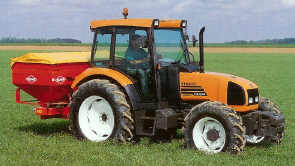
|
|
1996 Ares
815 RZ |
1996 Ares
825 RZ |
1997 Ergos
90/100/110
|
1997 Cergos
330/340
|
|
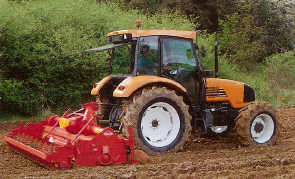
|
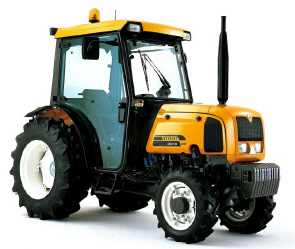
|
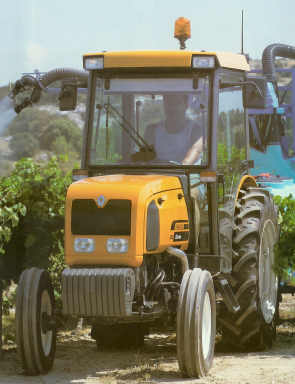
|
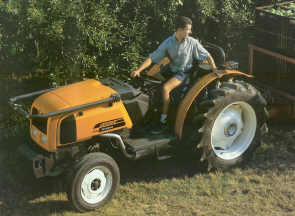
|
|
1997 Cergos
350 |
1998 Dionis
110/120
|
1998 Dionis
130/140 |
1998 Fructus
110/120/130
|
|
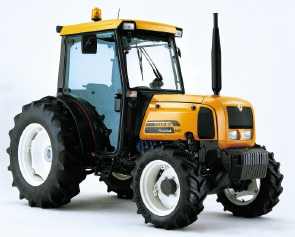
|
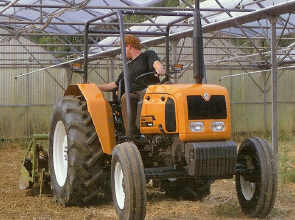
|
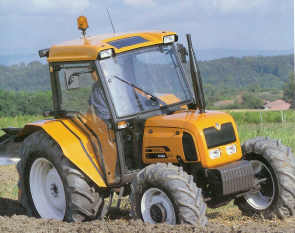
|
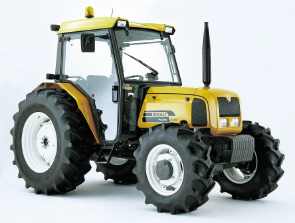
|
|
1998 Fructus
140 |
1999 Palès
210 |
1999 Palès
210/230
|
1999 Palès
240 |
|
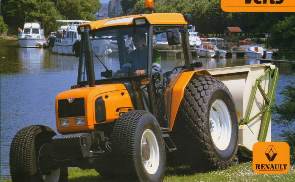 |
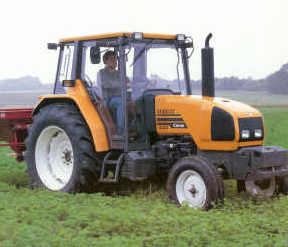
|
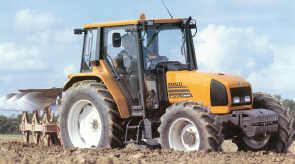
|
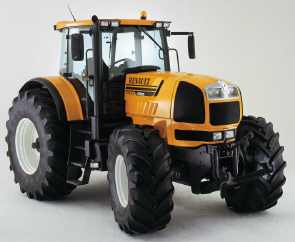
|
|
1999 Palès 210 Espaces Verts |
1999 Ceres
310/320/330/340
|
1999 Ceres
320 X/330 X/340
X |
2000 Atles
915/925/935
RZ |
|
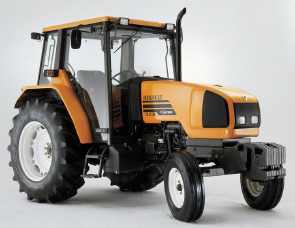
|

|
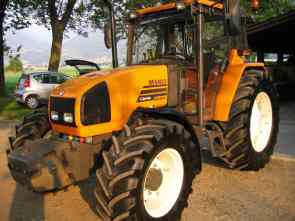
|
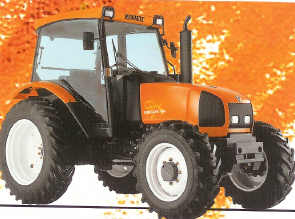
|
|
2001 Ceres
325 2wd |
2001 Ceres
335/345/355
|
2001 Ceres
325/335/345/355
X |
2001 Ergos
85/95/105
|
|
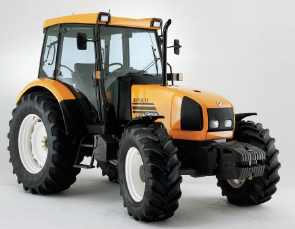
|
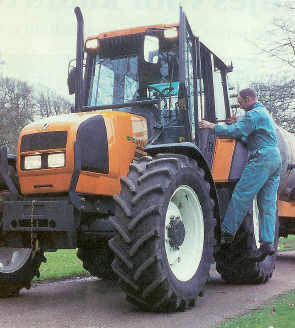
|
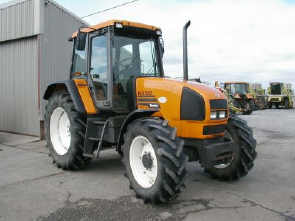
|
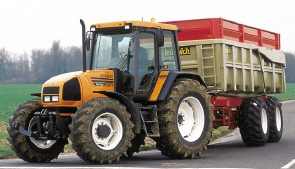
|
|
2001 Cergos
335/345/355
|
2001 Témis
550 X |
2001 Témis
610/630 X/Z
|
2001 Témis
650 X/Z
|
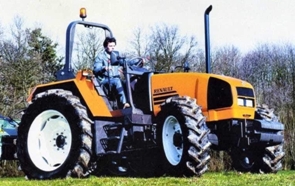 |
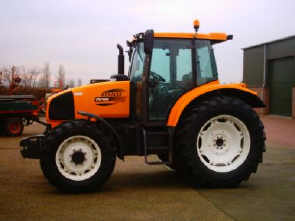
|
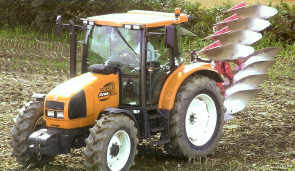
|
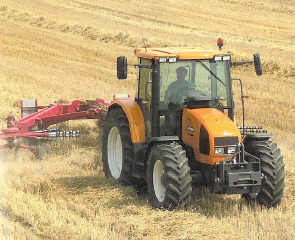
|
|
Témis 650 |
2002 Ares
546
RX/RZ
|
2002 Ares
556
RX/RZ
|
2002 Ares
566
RX/RZ
|
|
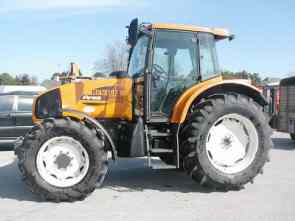
|
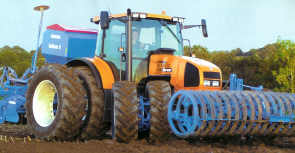
|
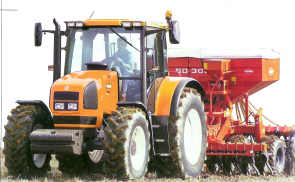
|
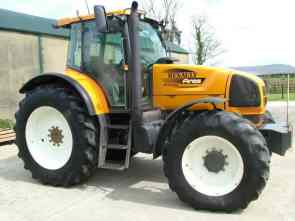
|
|
2002 Ares
616/626
RX/RZ
|
2002 Ares
636 RZ |
2002 Ares
656/696 RZ |
2002 Ares
816/826/836
RX/RZ
|
|
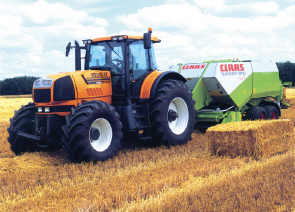
|
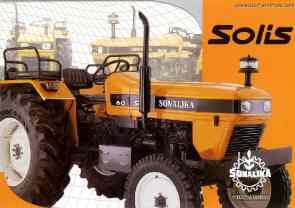 |
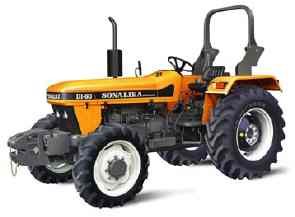 |
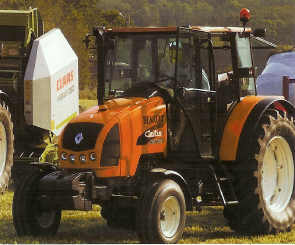
|
|
2002 Atles
926/936
RZ |
2002 Sonalika
Solis 40/60 |
2002 Sonalika
DI-35/DI-55/DI-60/DI-75 |
2003 Celtis
426 RE |
|
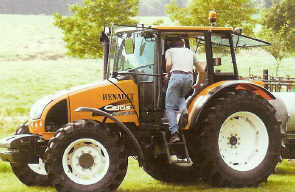
|
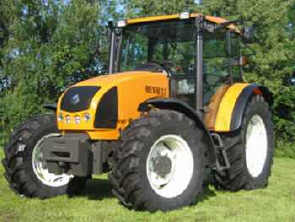
|
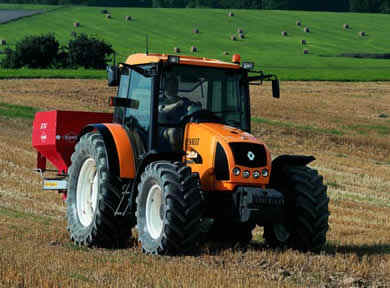
|
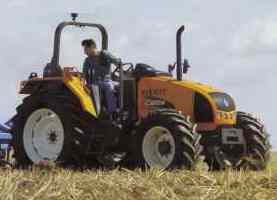 |
|
2003 Celtis
436 RX |
2003 Celtis
446 |
2003 Celtis
456 |
2003 Celtis
Arceau |
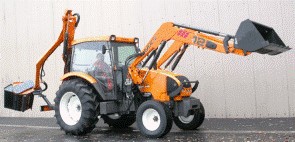 |
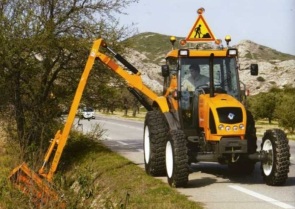 |
 |
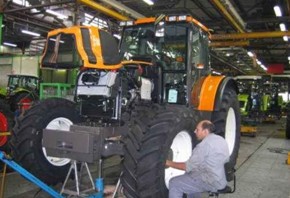 |
|
2003 Ergos
436/446/456/466
2WD
|
2003 Ergos 436/446/456/466 |
Sonalika Ceres 85X |
2004
Laatste Renault tractor |
From 2004
|
De Celtis was nog
maar net een jaar verkrijgbaar of hij is al niet meer in Renault kleuren te
krijgen. Evenals de Ares en Atles worden ze voortaan als Claas in
lichtgroen-wit met rode velgen geleverd. Maar of de Renault-oker kleur echt
definitief gaat verdwijnen, ik weet het (nog) niet, ze zeggen dat ze in
Frankrijk wel nog "oranje" blijven, ik hoop het maar... |
|
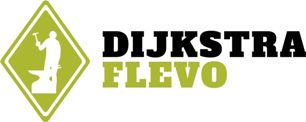 |
|
|
|
|
|
|
|
|
|
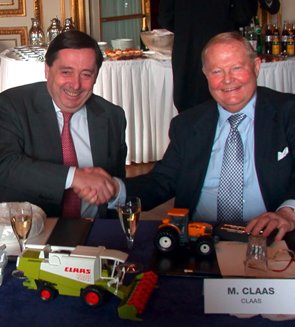 |
|
|
|
|
2003 overname Claas op 23-2 |
|
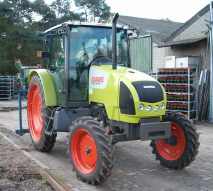
|
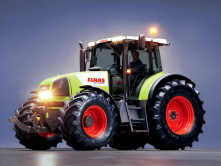
|
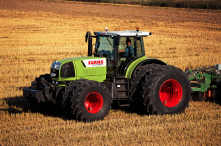
|
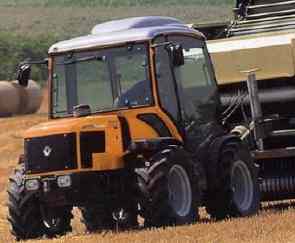 |
|
2004 Claas
Celtis 426 RC |
2004 Claas
Ares 826 RZ |
2004 Claas
Atles 936 RZ |
2004 Multis
106/136/156 |
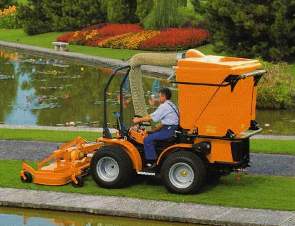 |
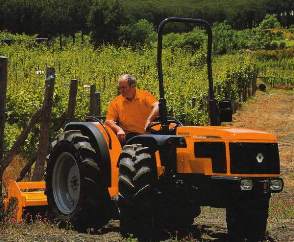 |
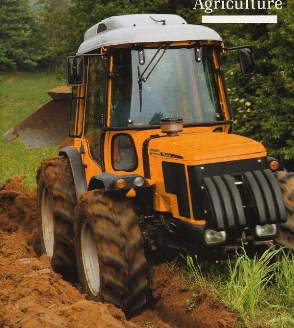 |
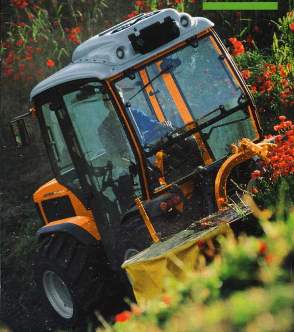 |
|
2004 Multis 106 XR |
2004 Multis F |
2004 Multis R |
2004 Multis TR |
|
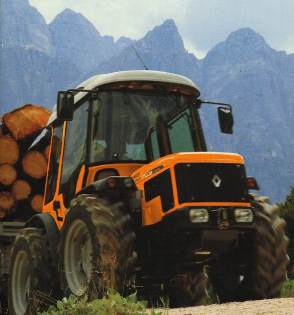 |
 |
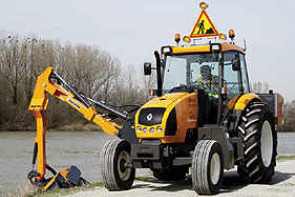
|
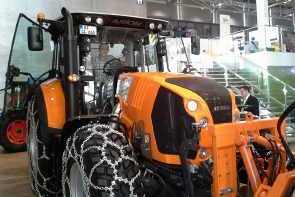 |
|
2004 Multis TR |
2005 RB130/140
|
2005 Ergos
|
2013 Arion 430
|
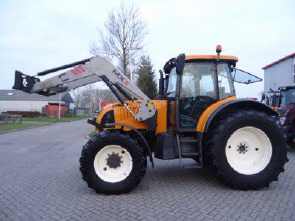 |
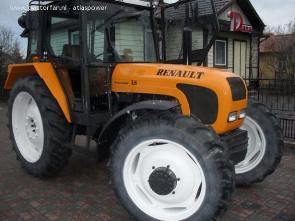 |
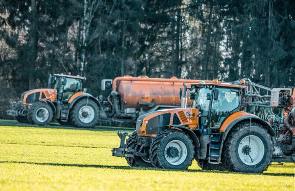 |
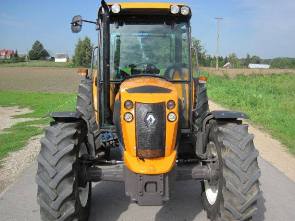 |
|
Claas |
85-14 LS |
Claas |
Nectis |
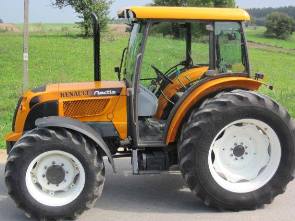 |
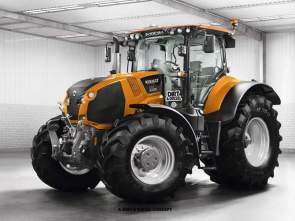 |
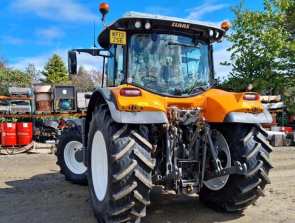 |
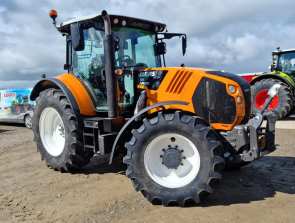 |
|
Nectis |
2019, Axion, photoshoped? |
2021, Claas Arion |
2021, Claas Arion |
©2004-2025 Renaultoloog - Eddy Lenders - ©Tony Vos - ©Renault
Agriculture - ©Charge
Utile - ©Claas
|
